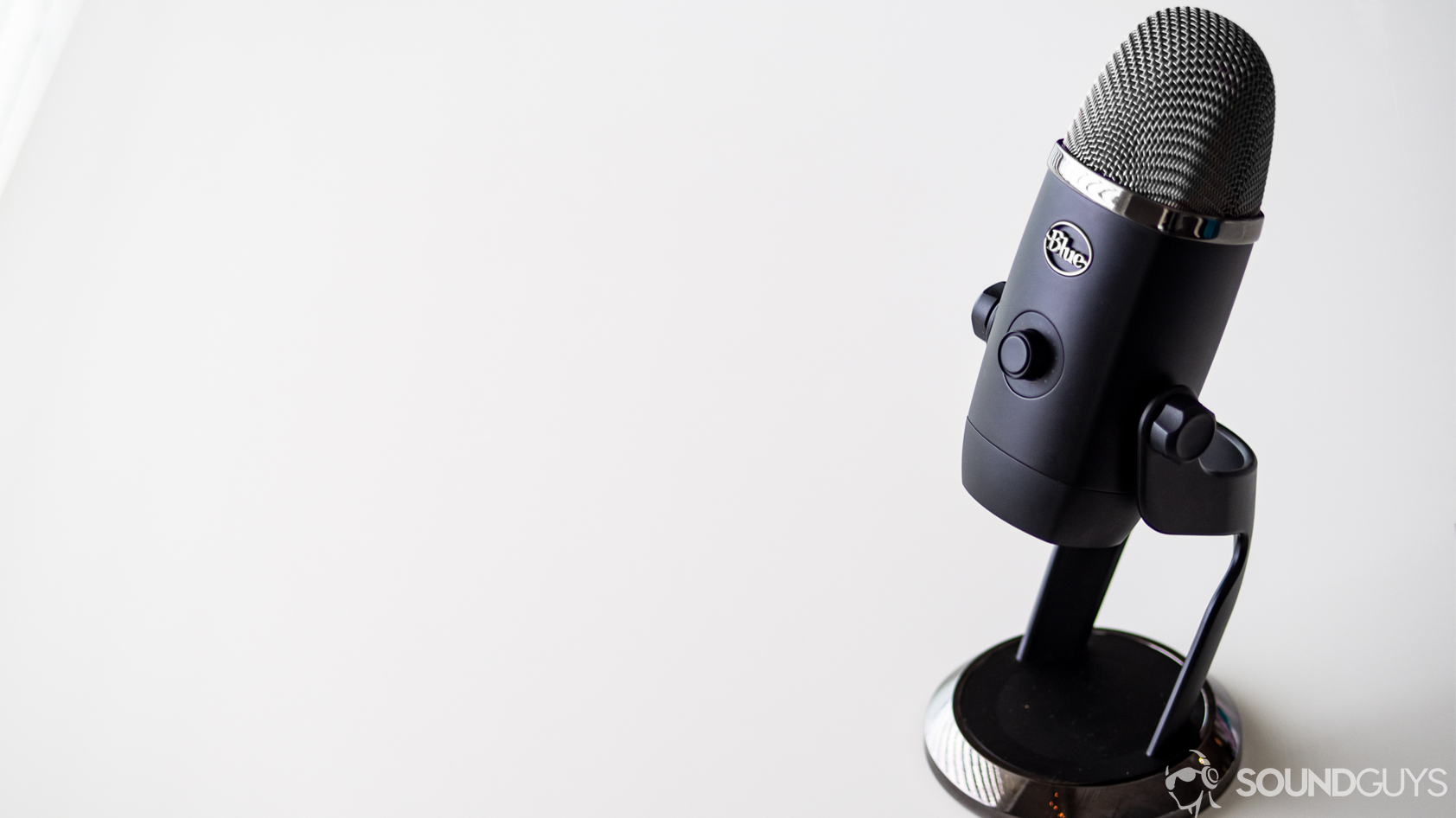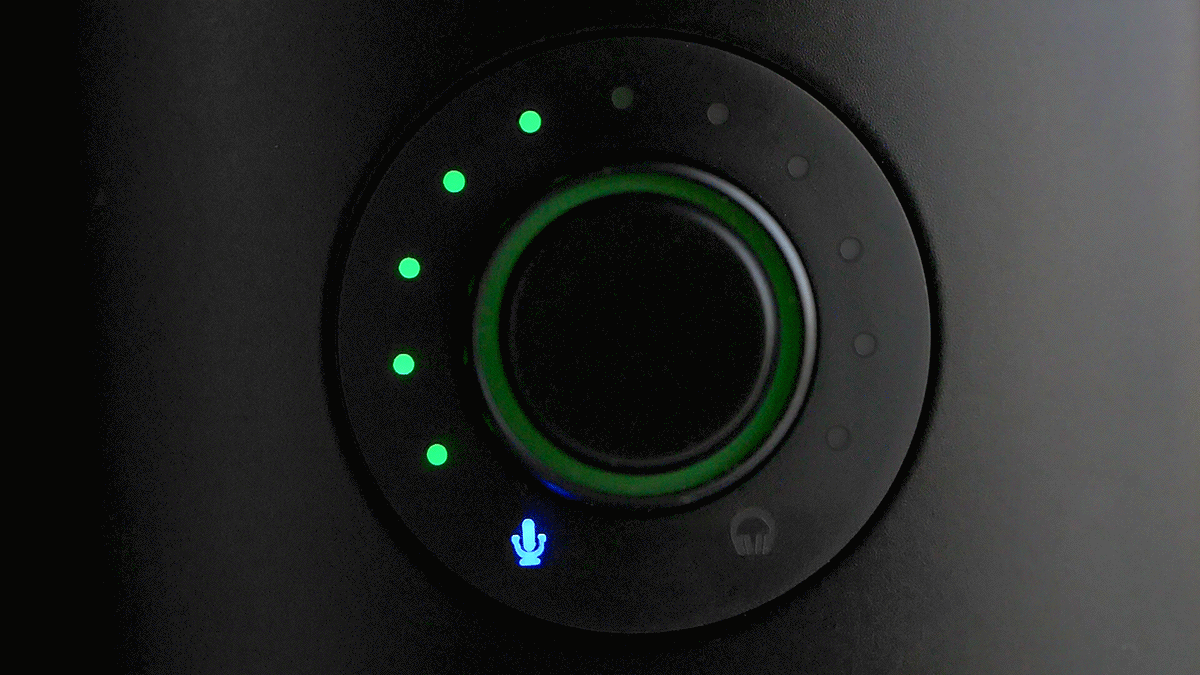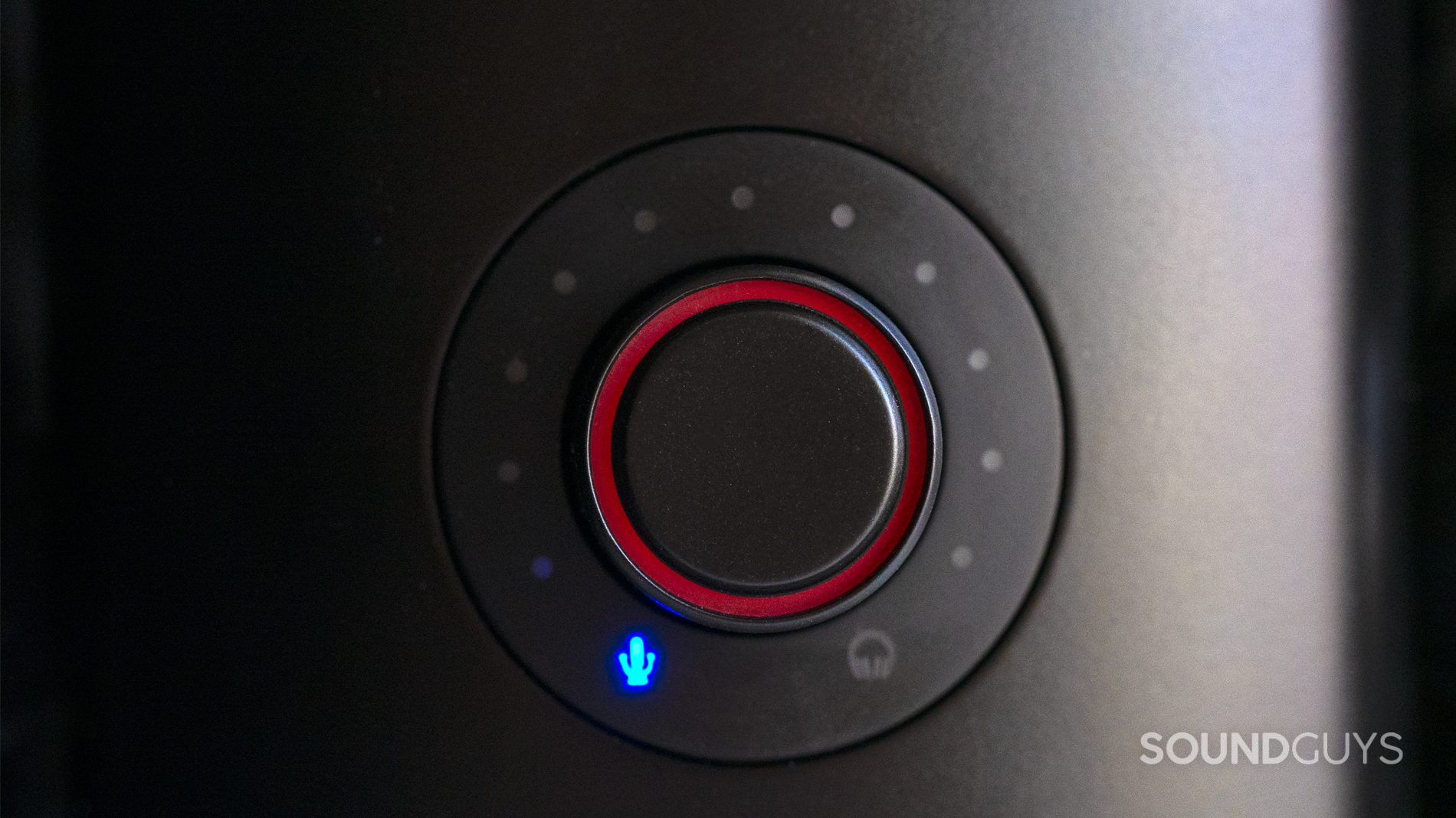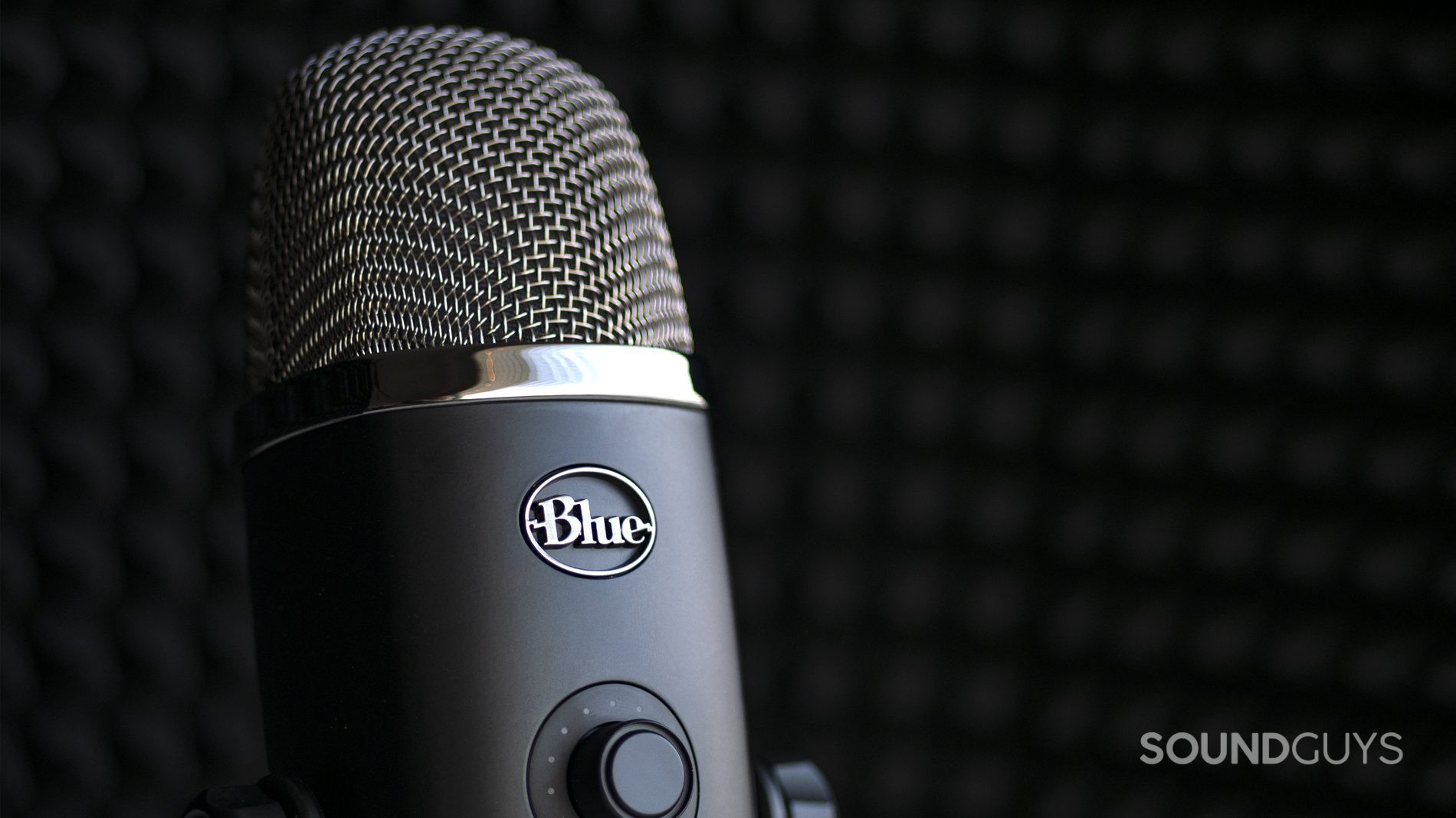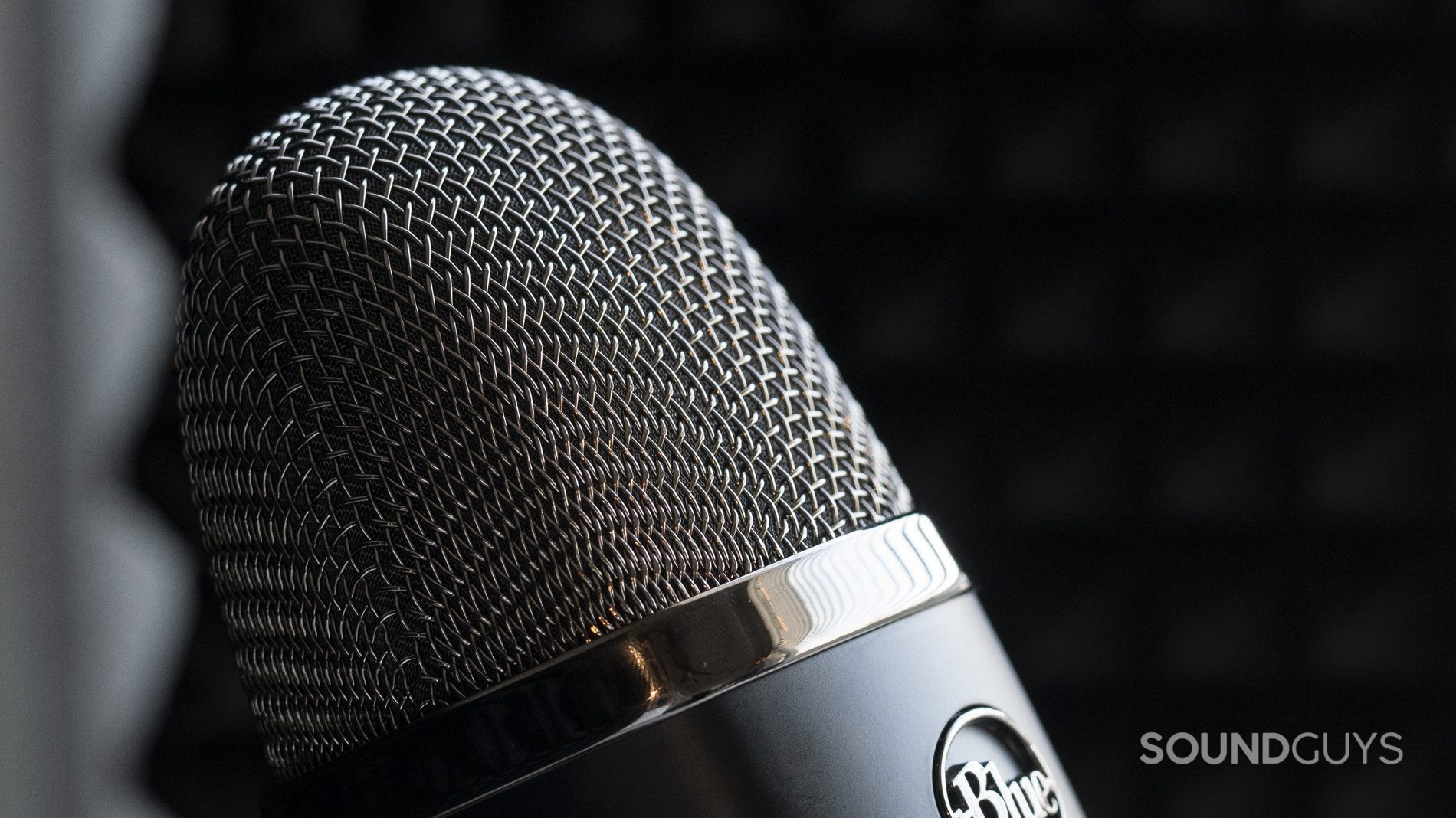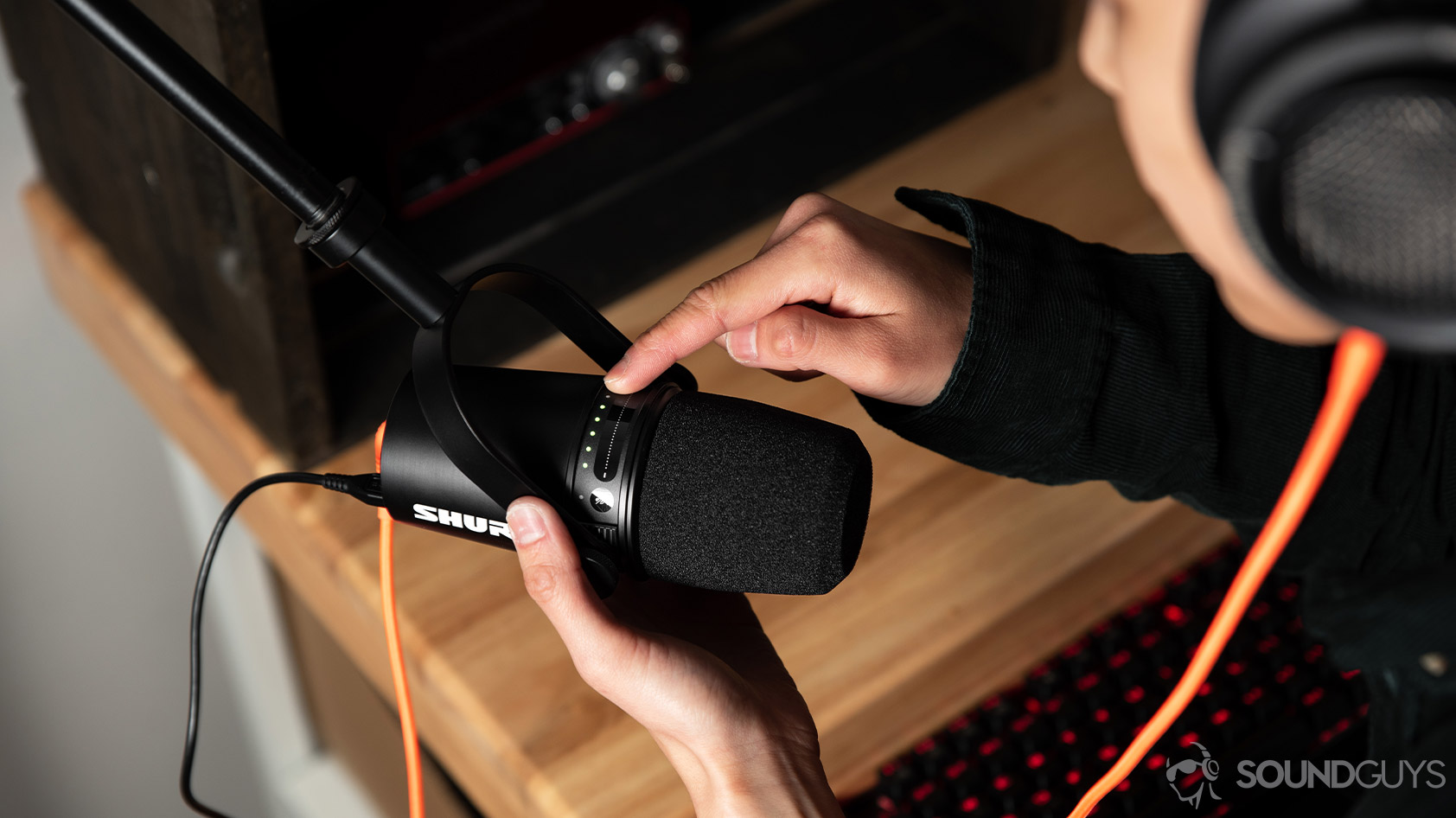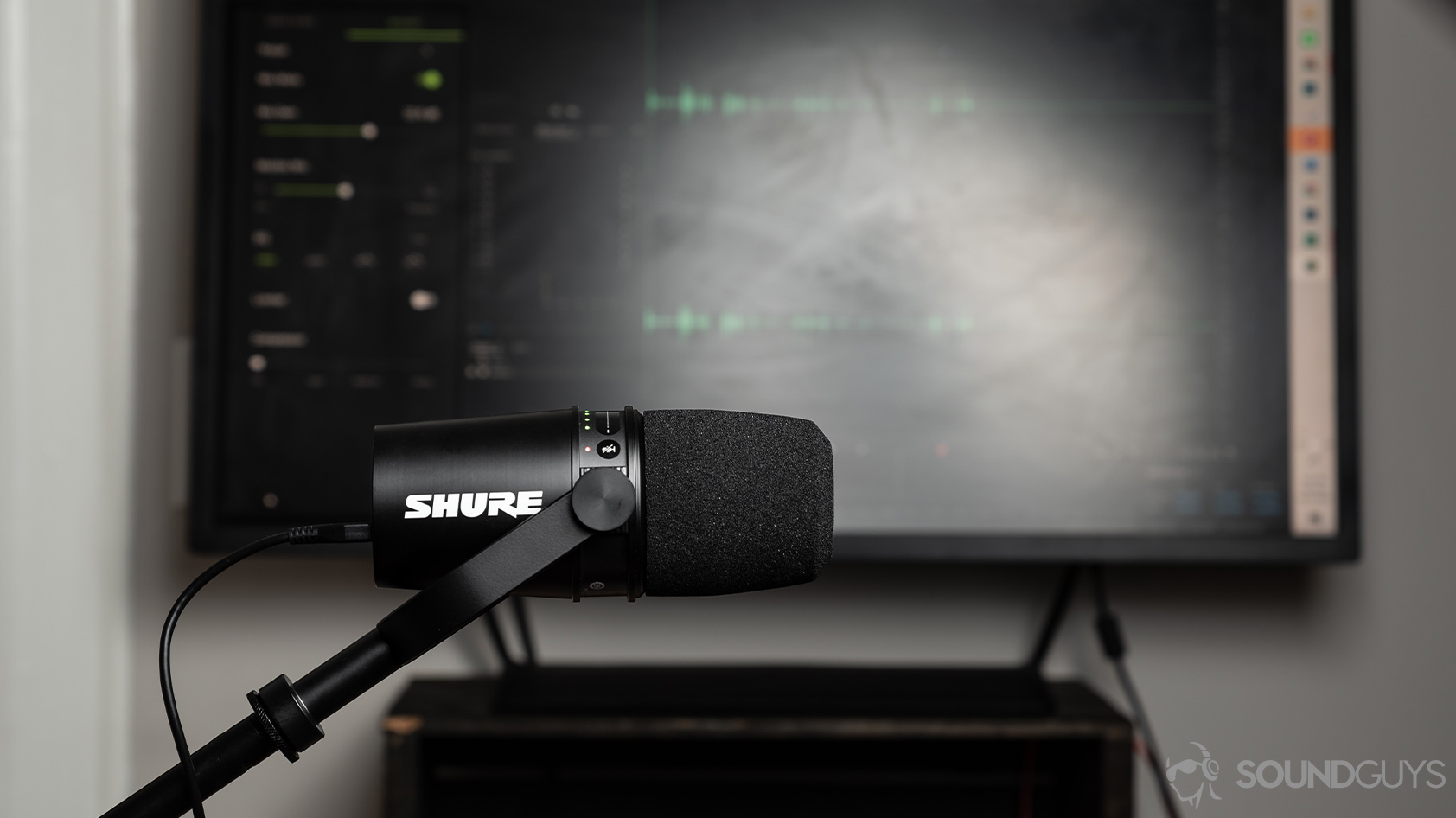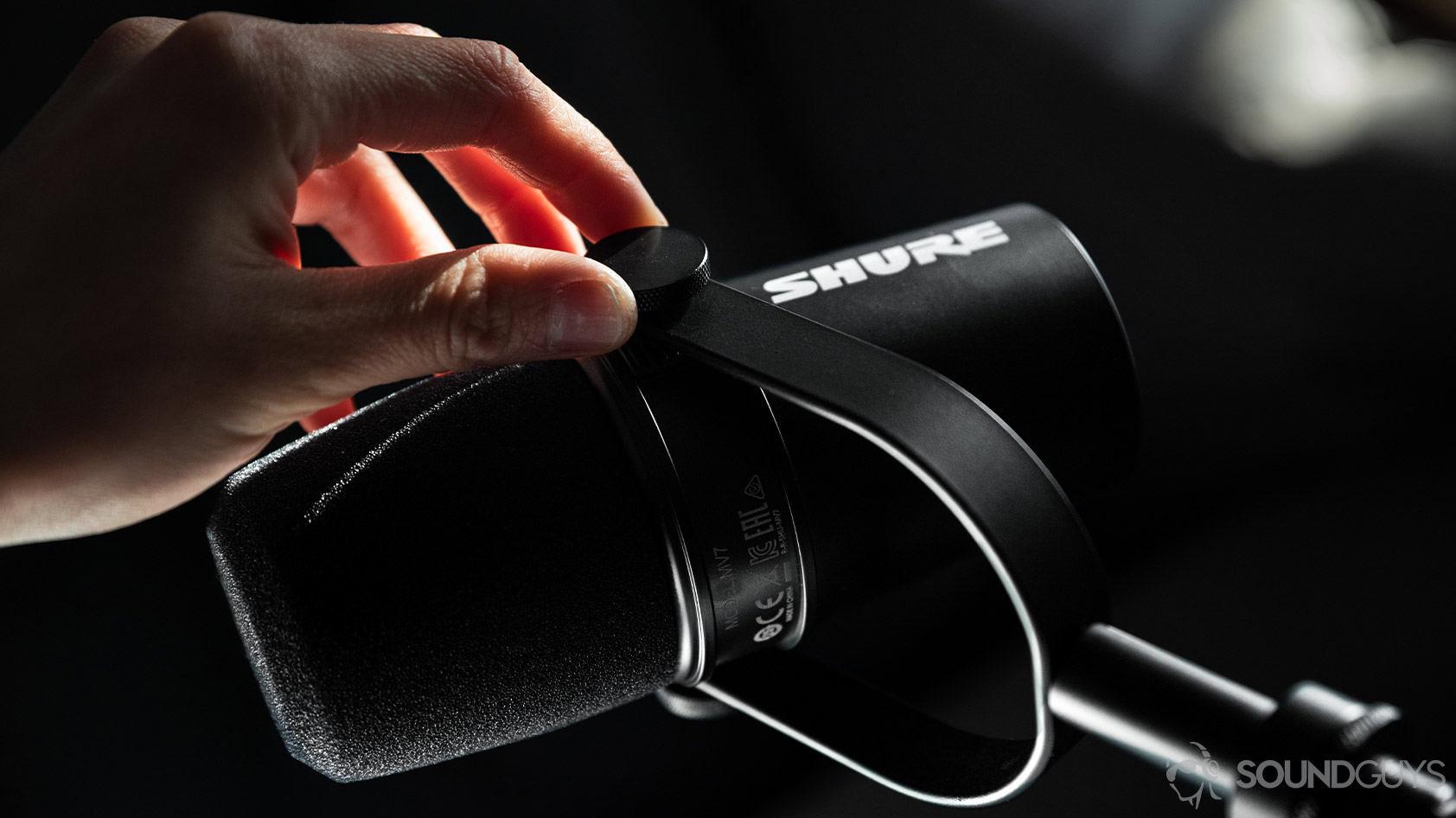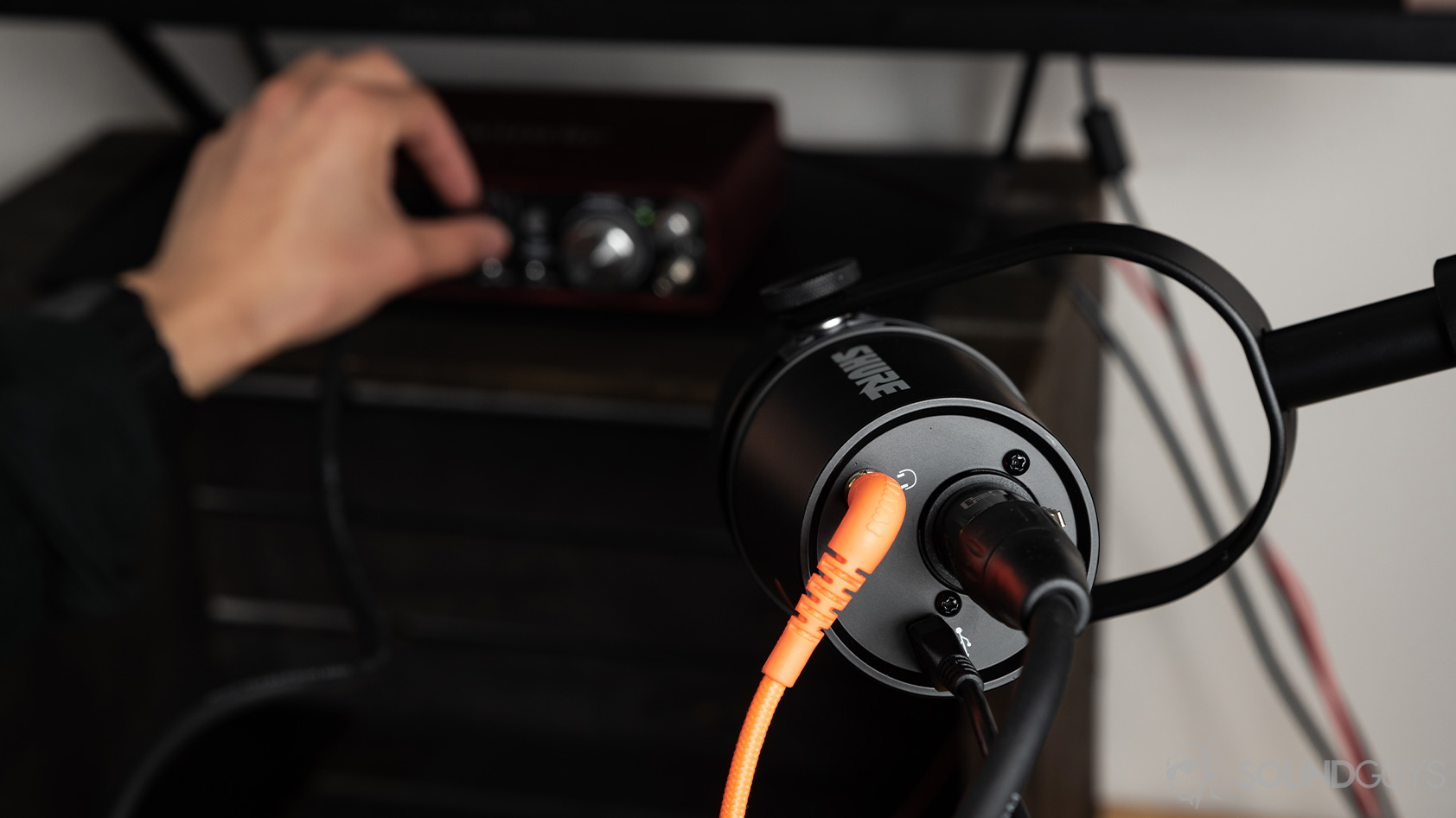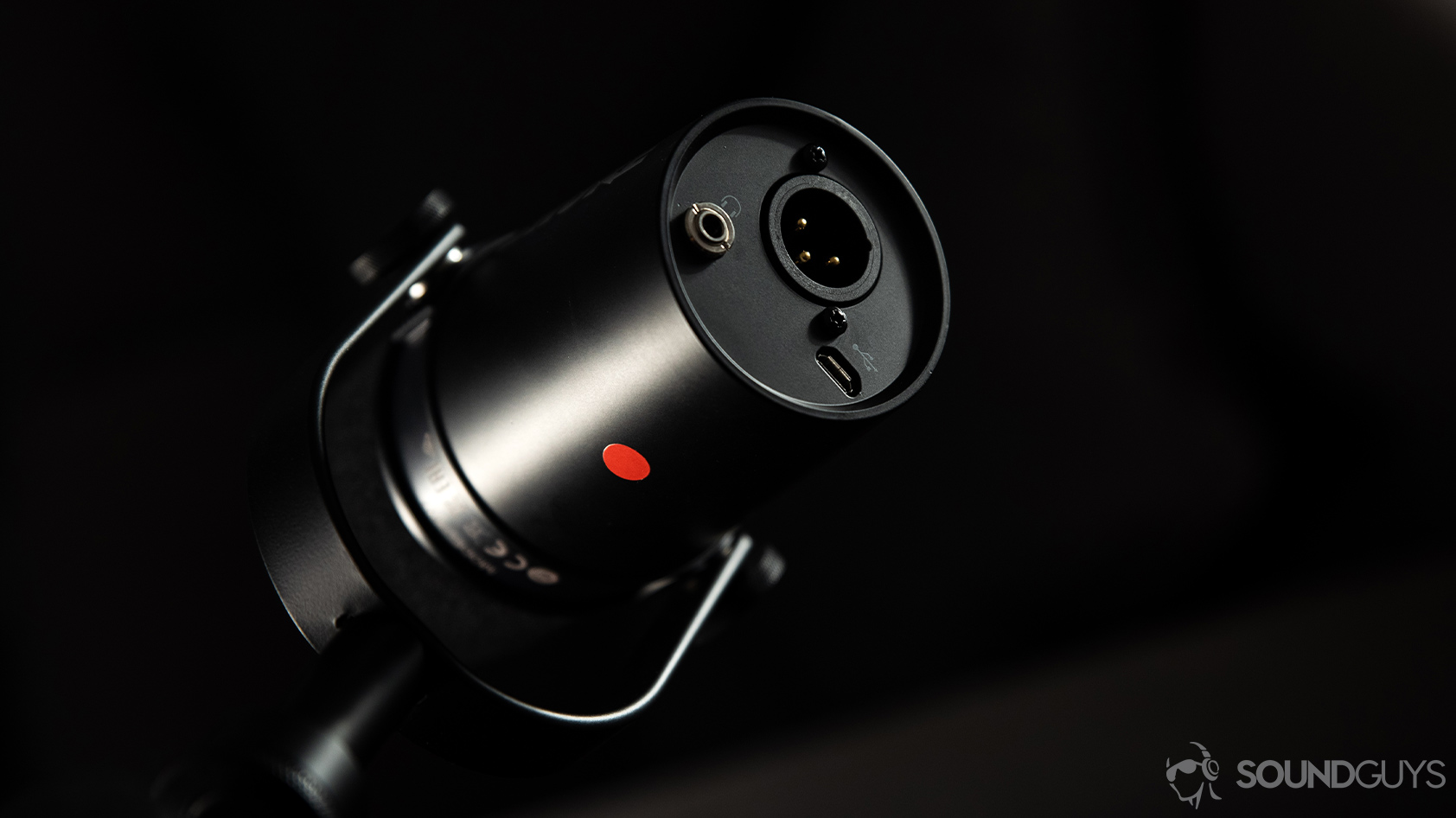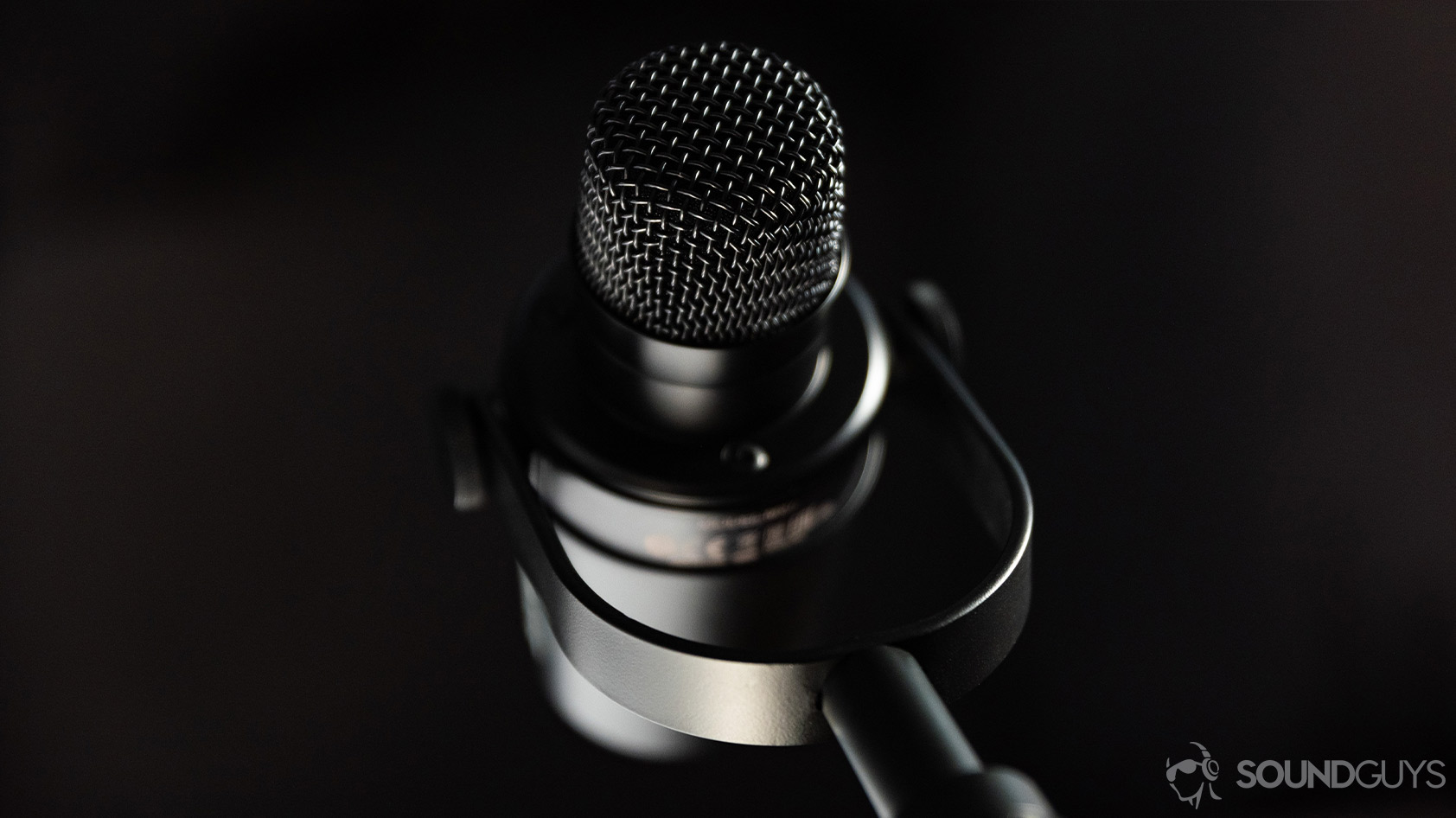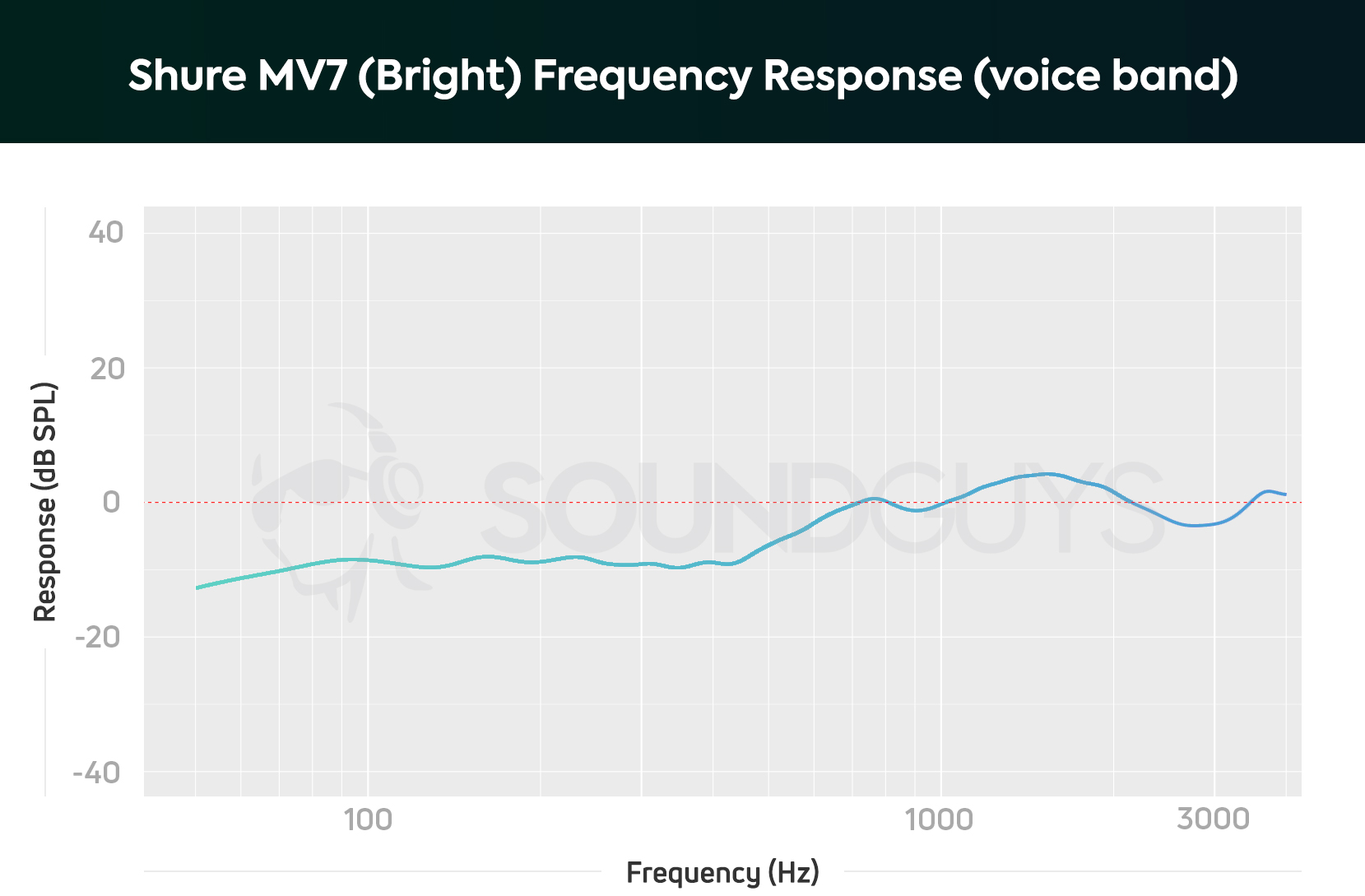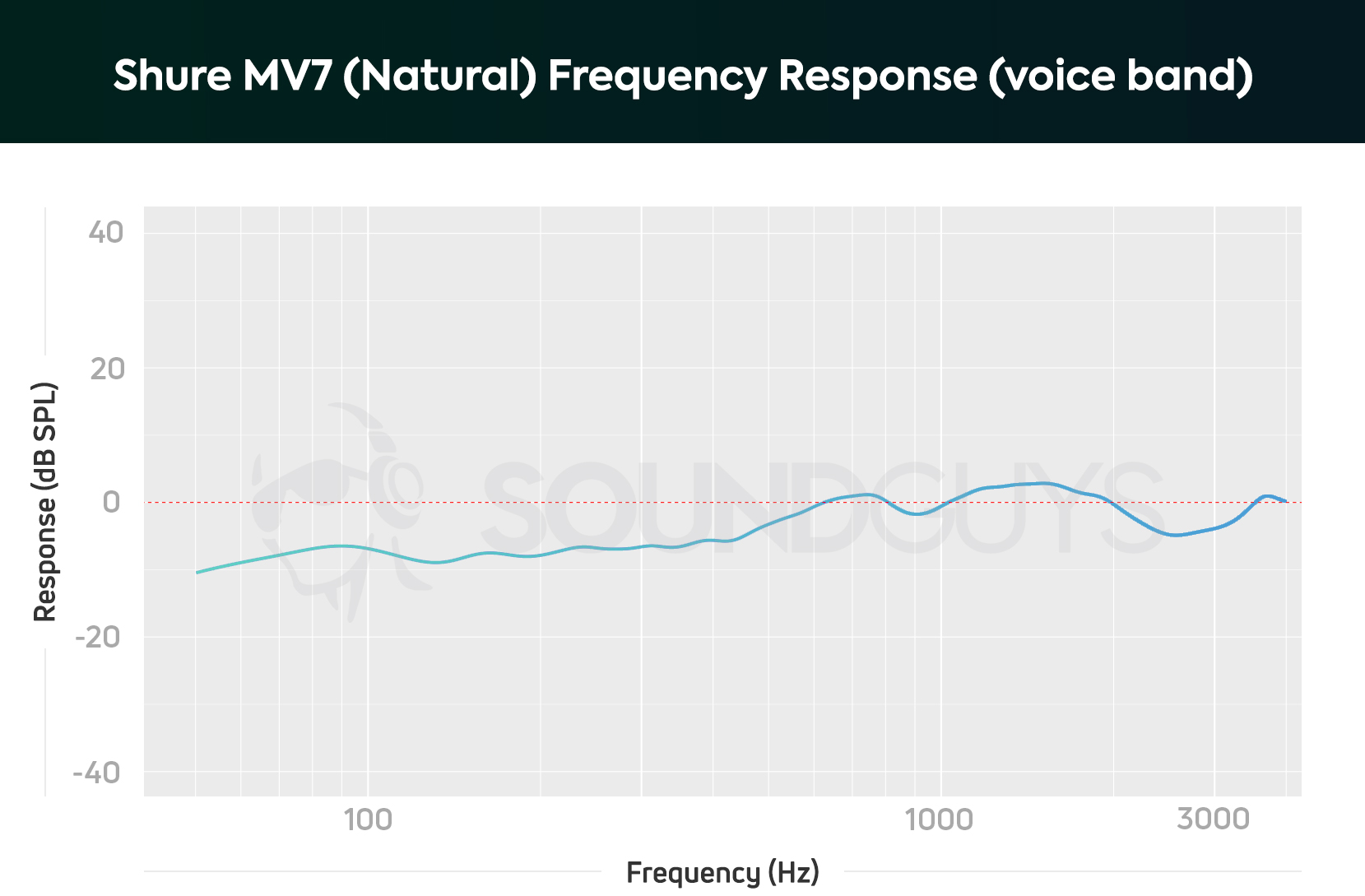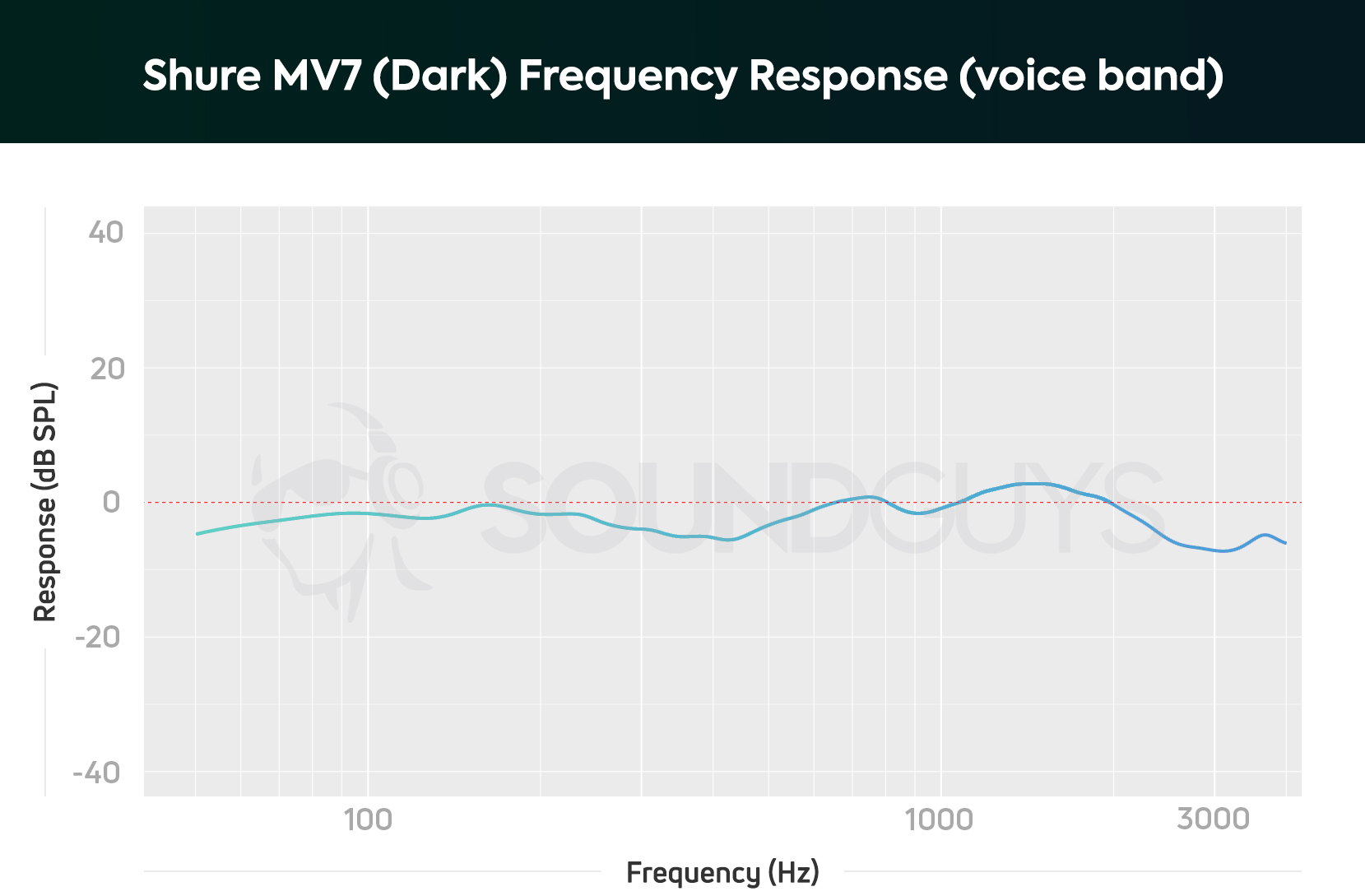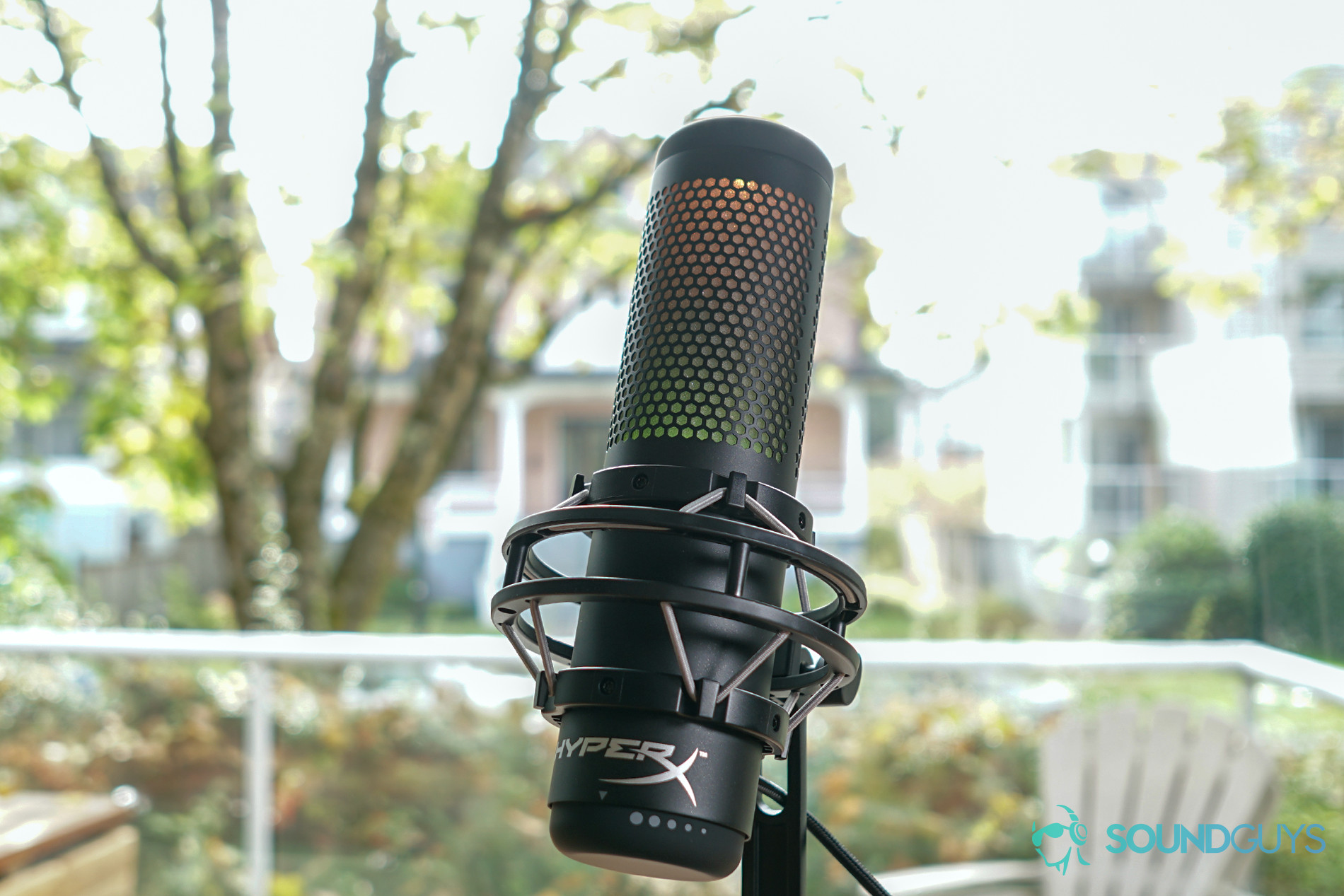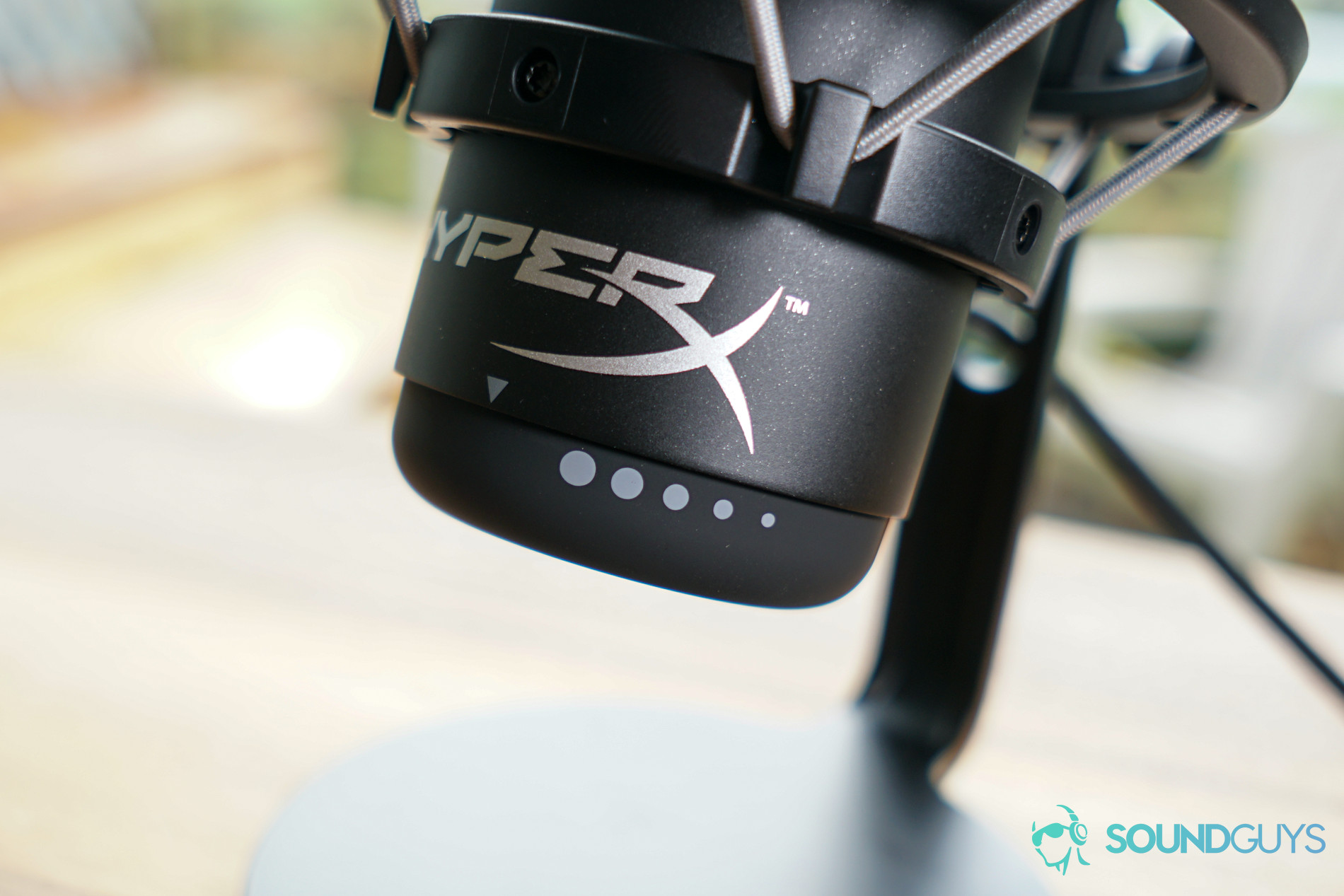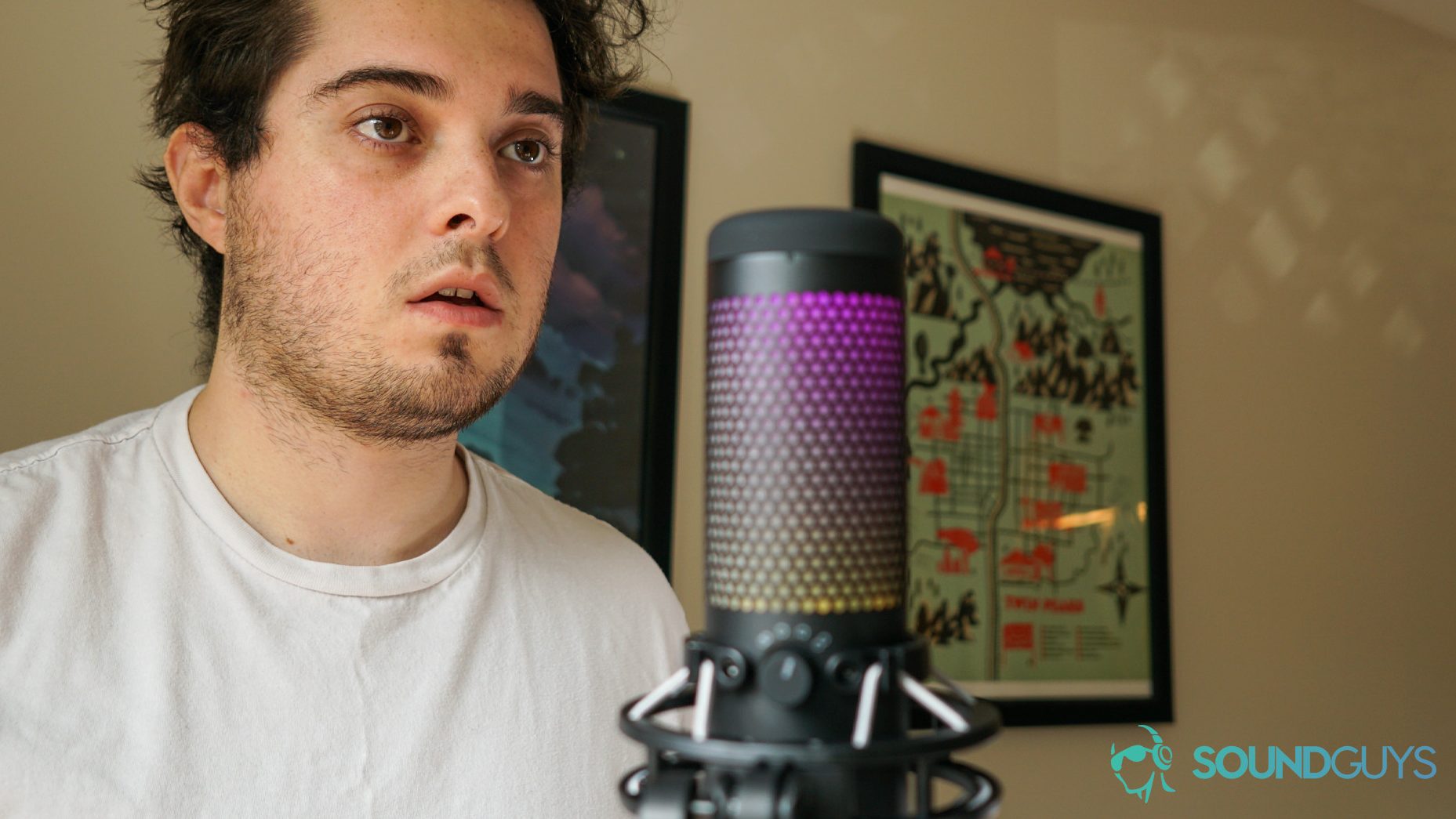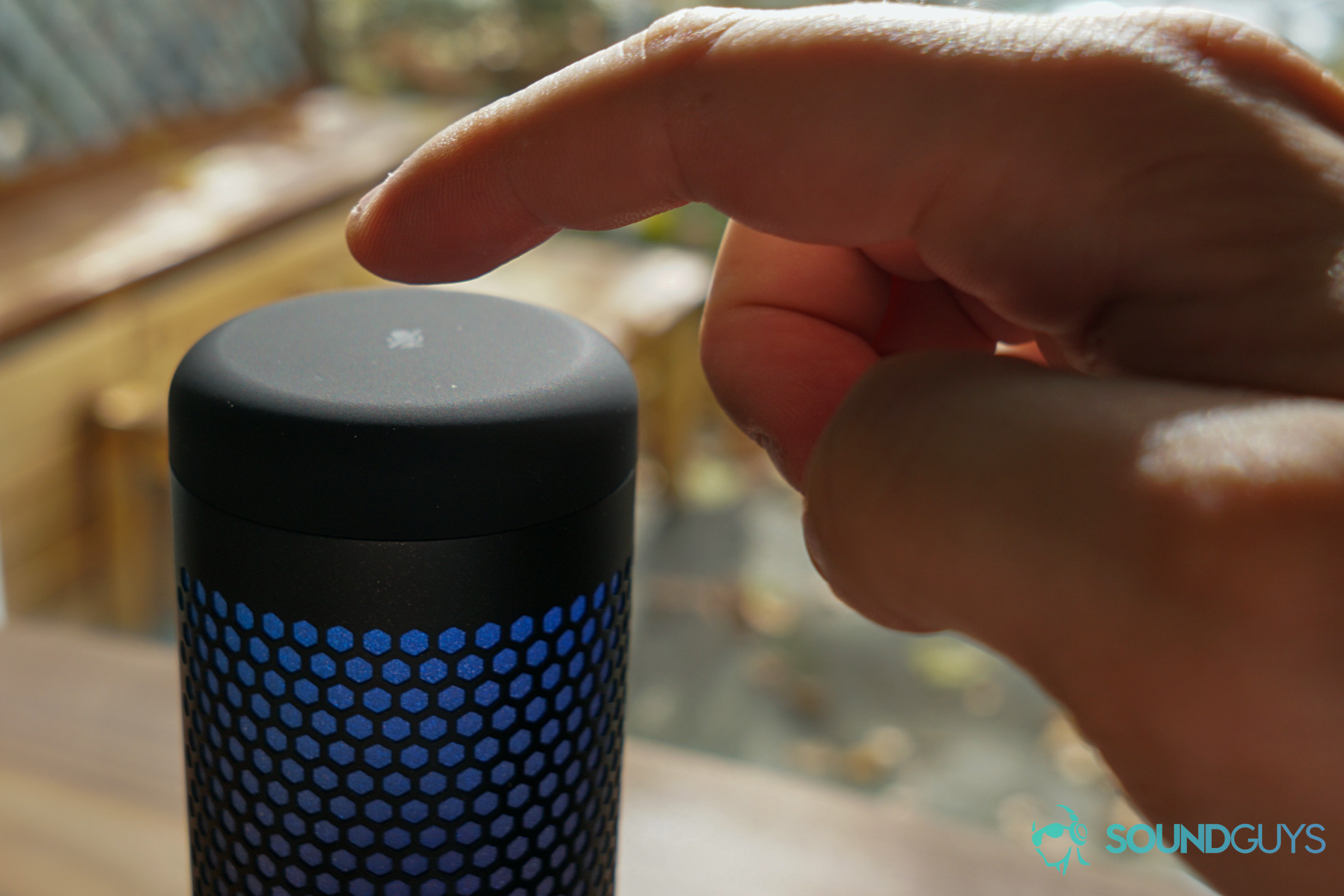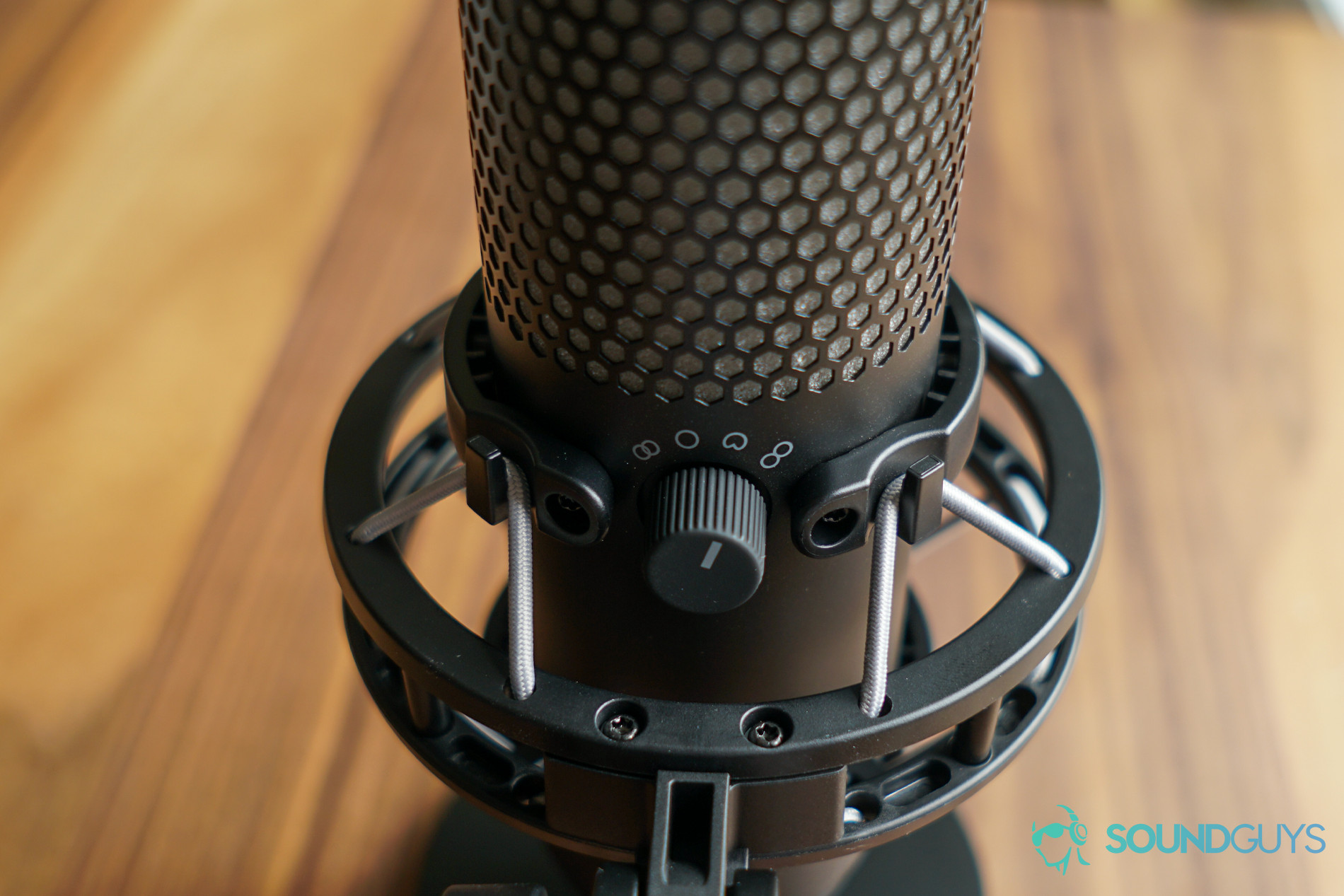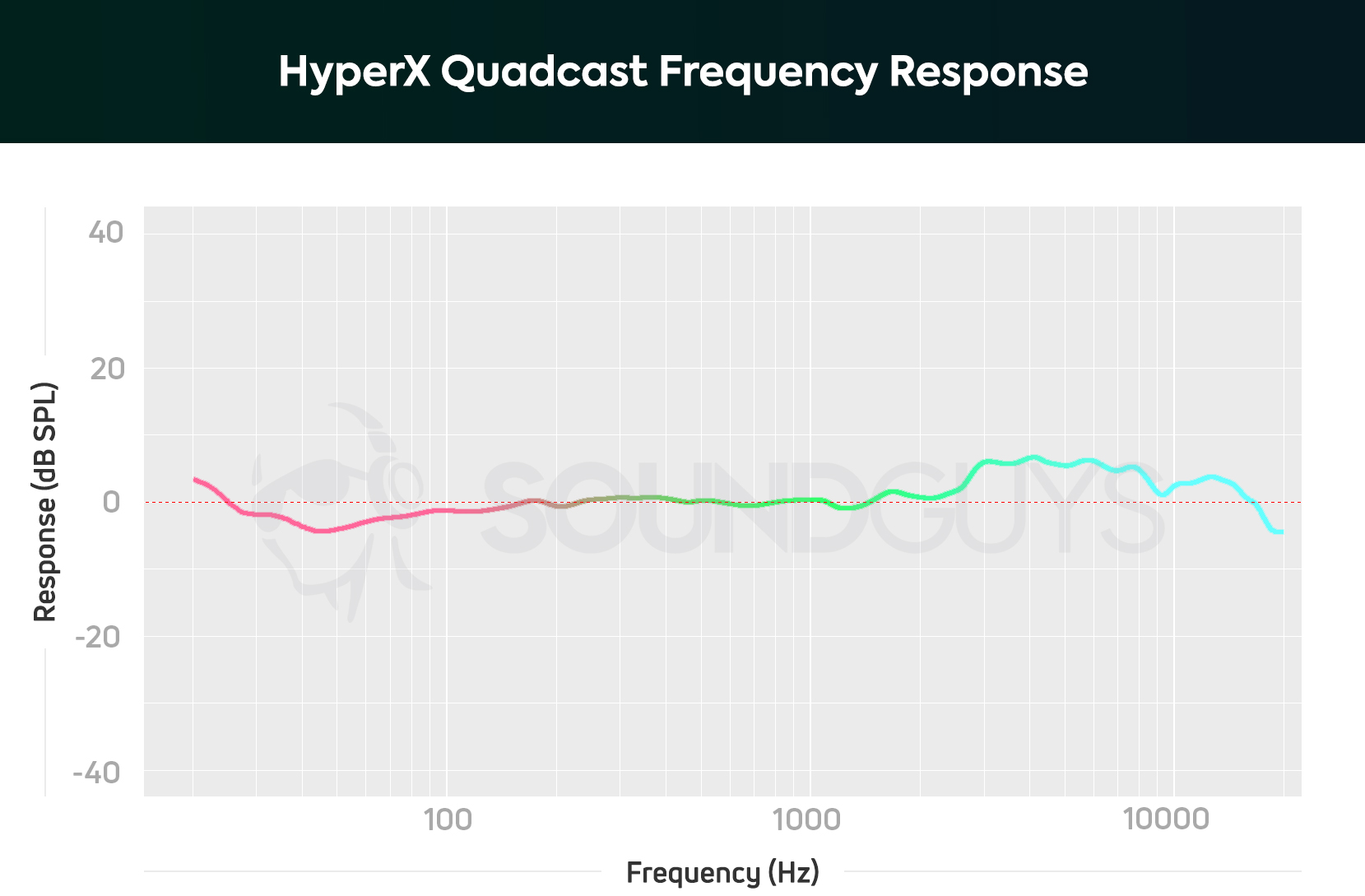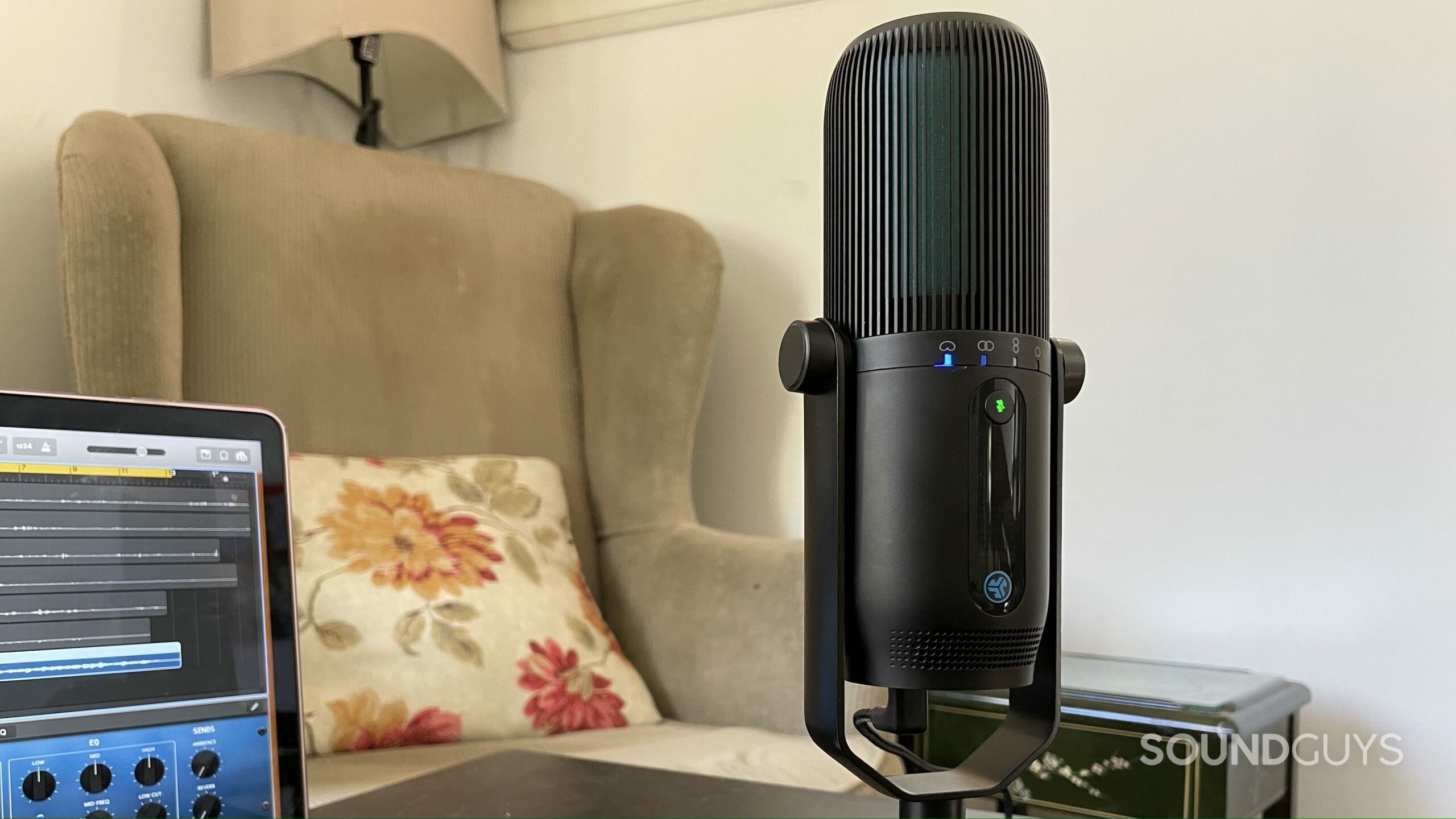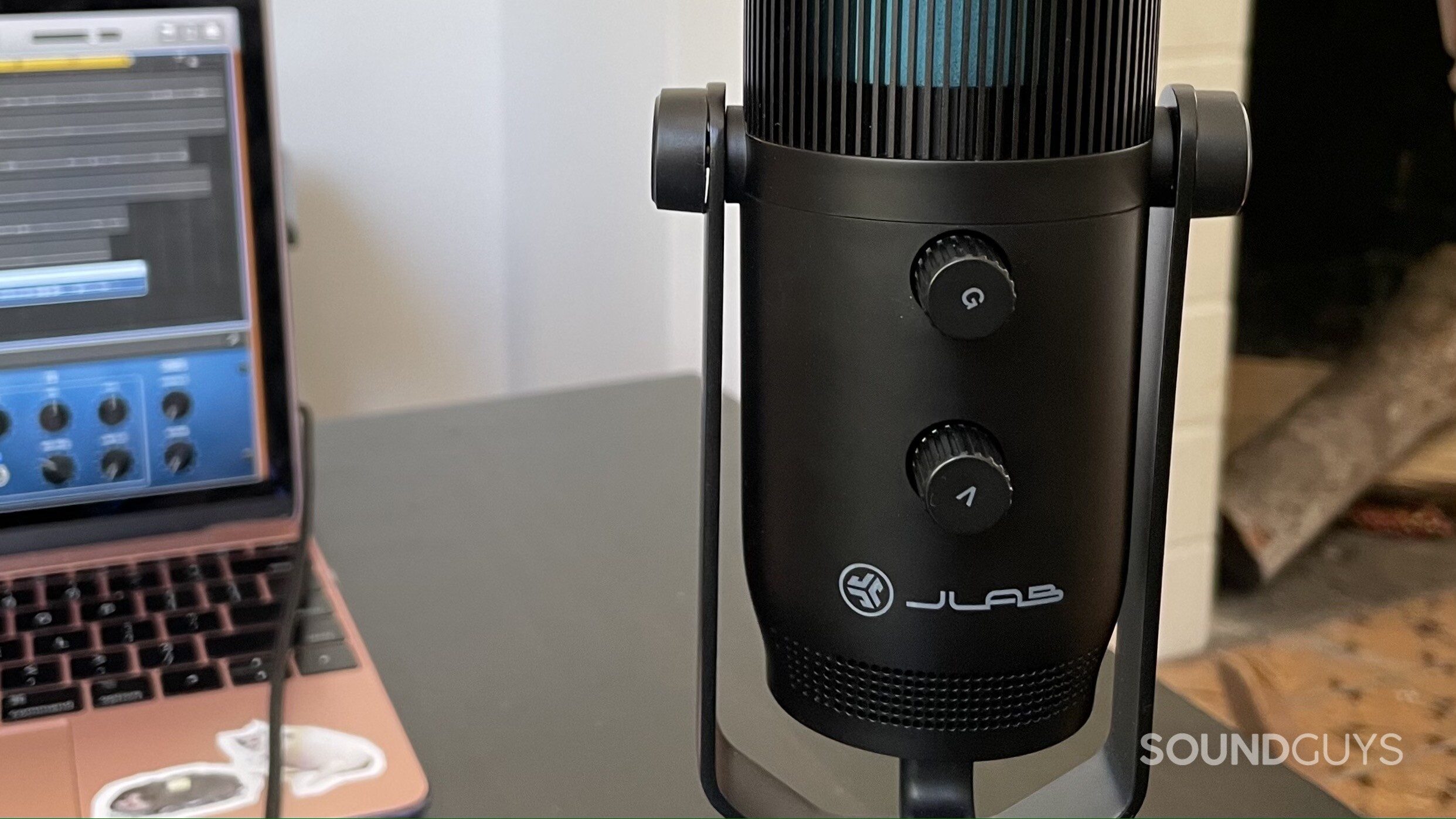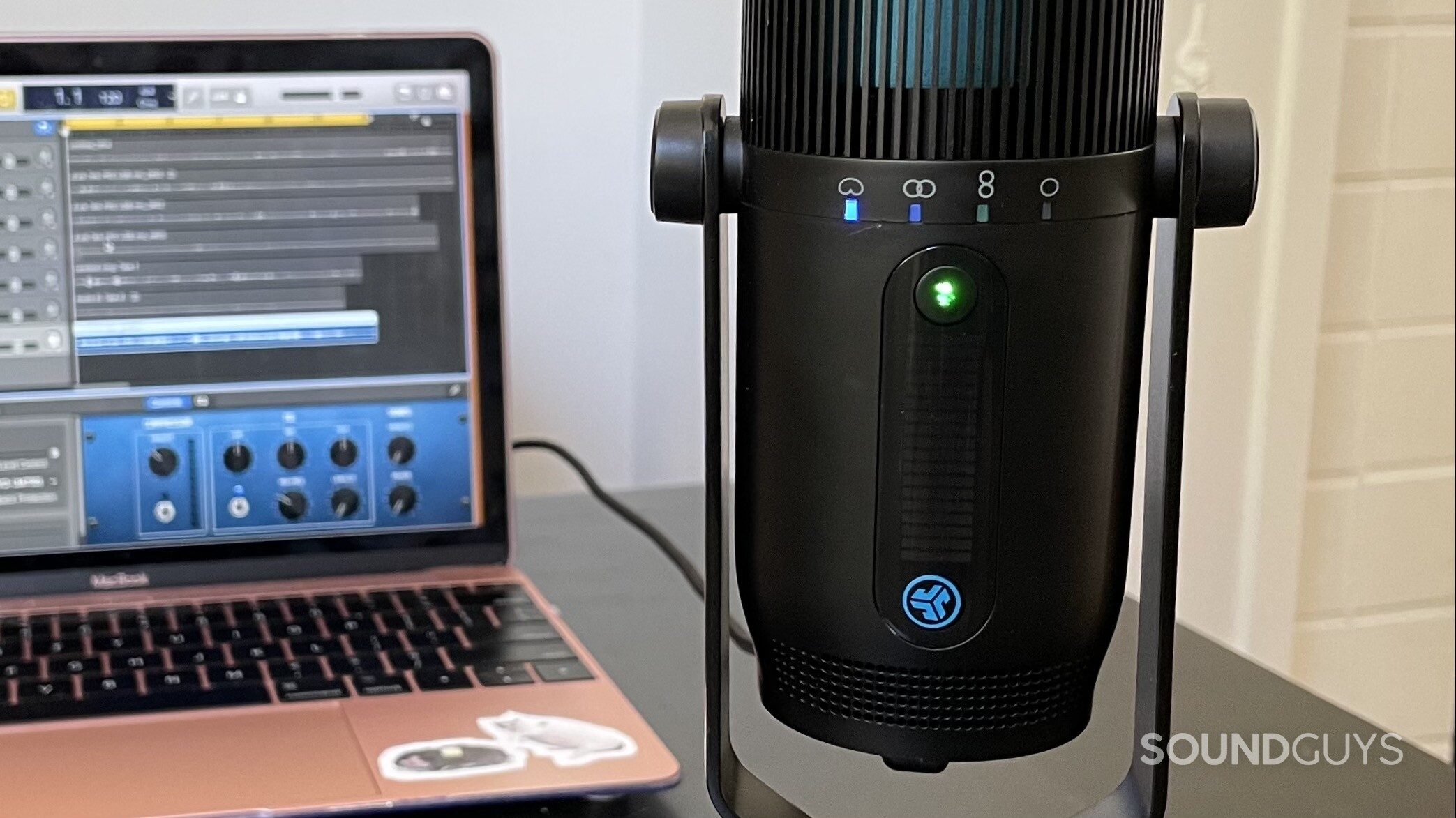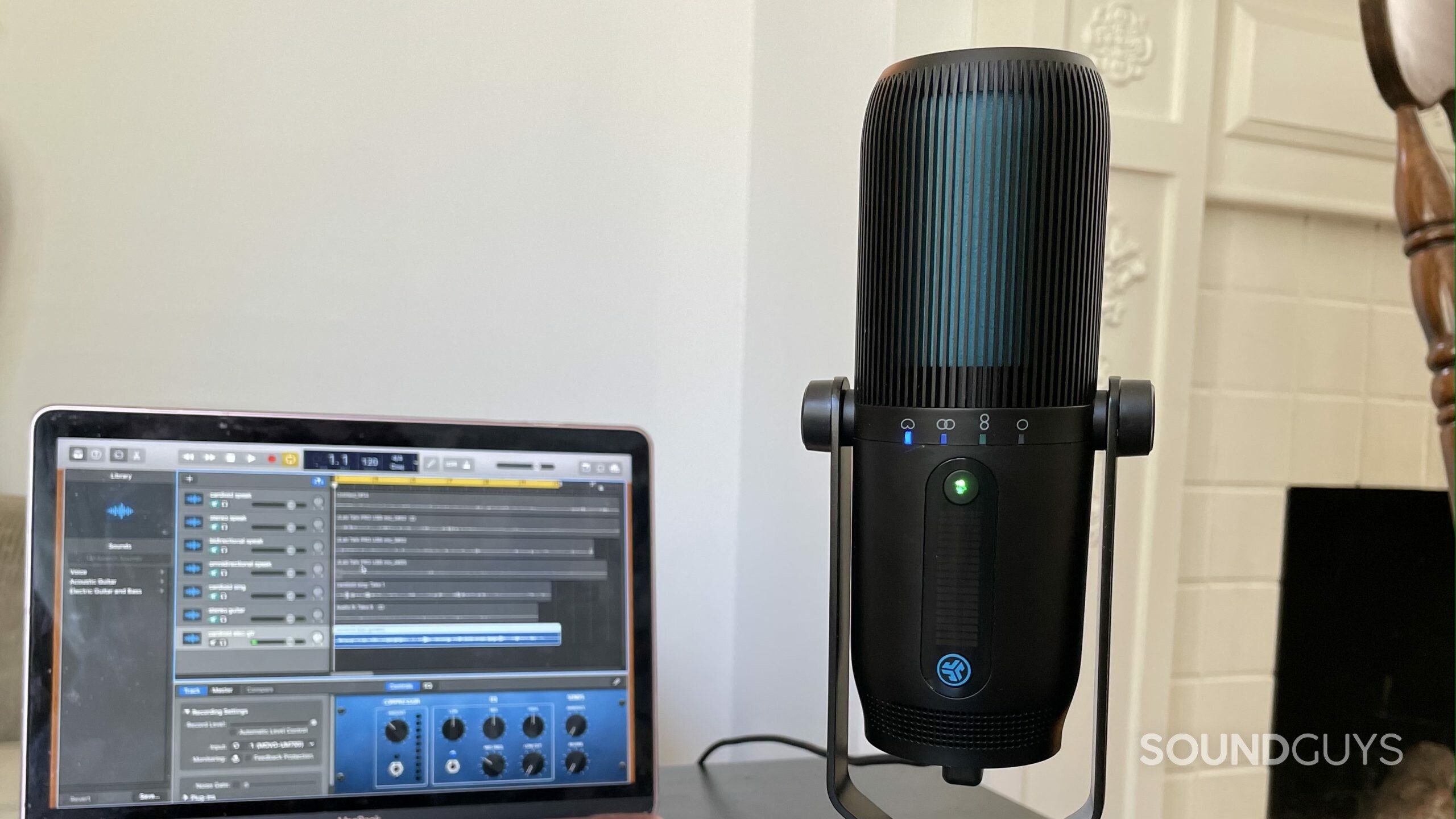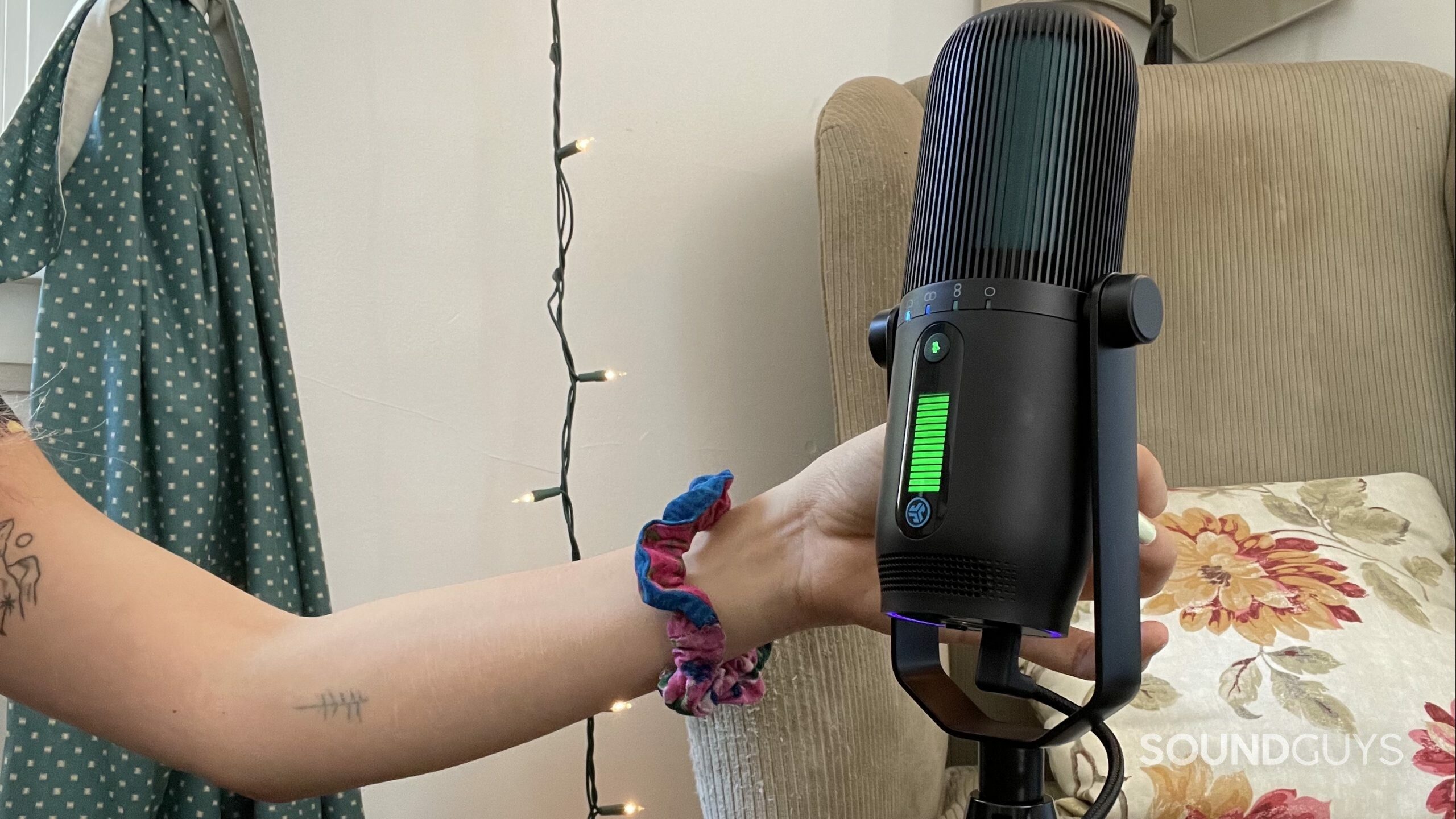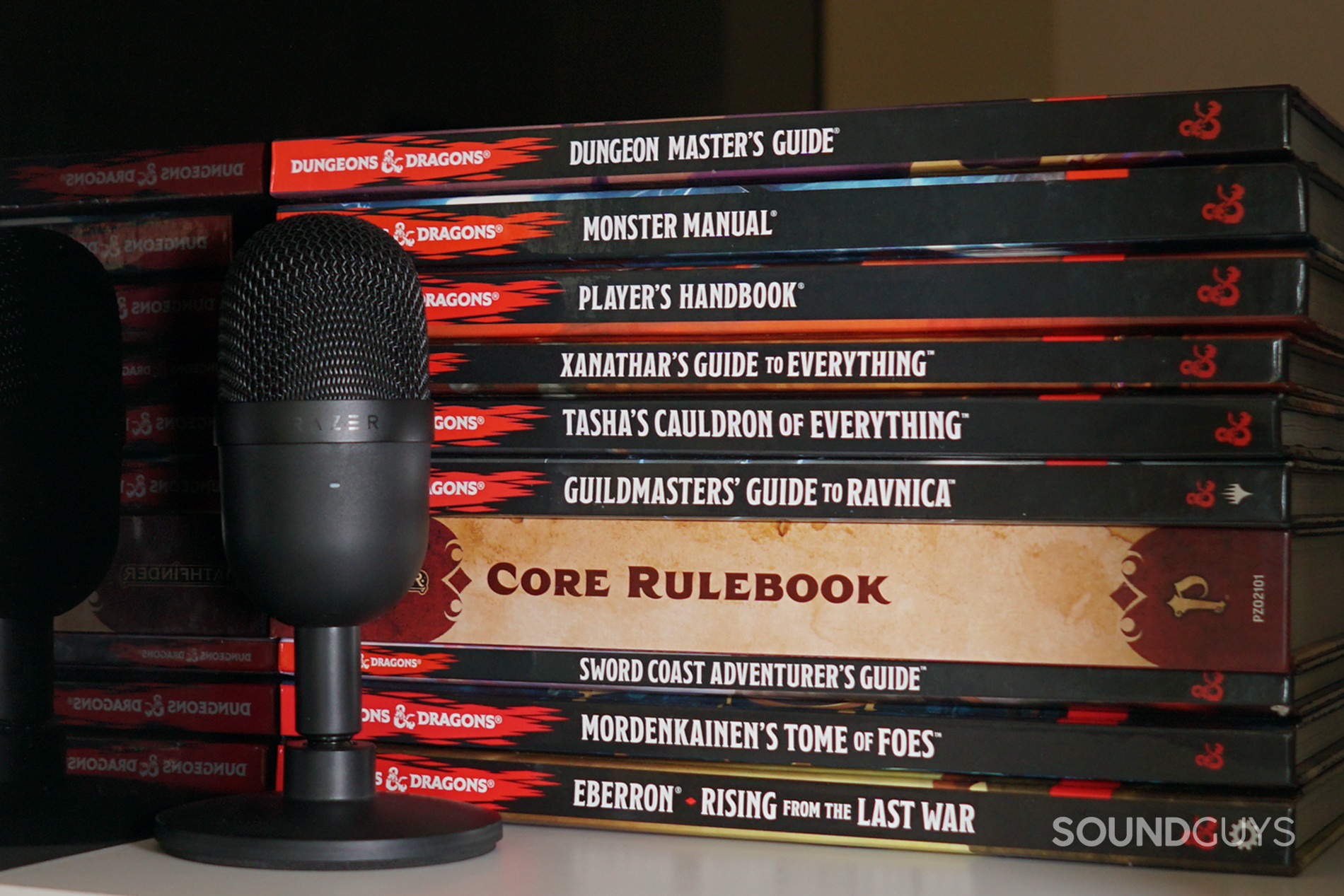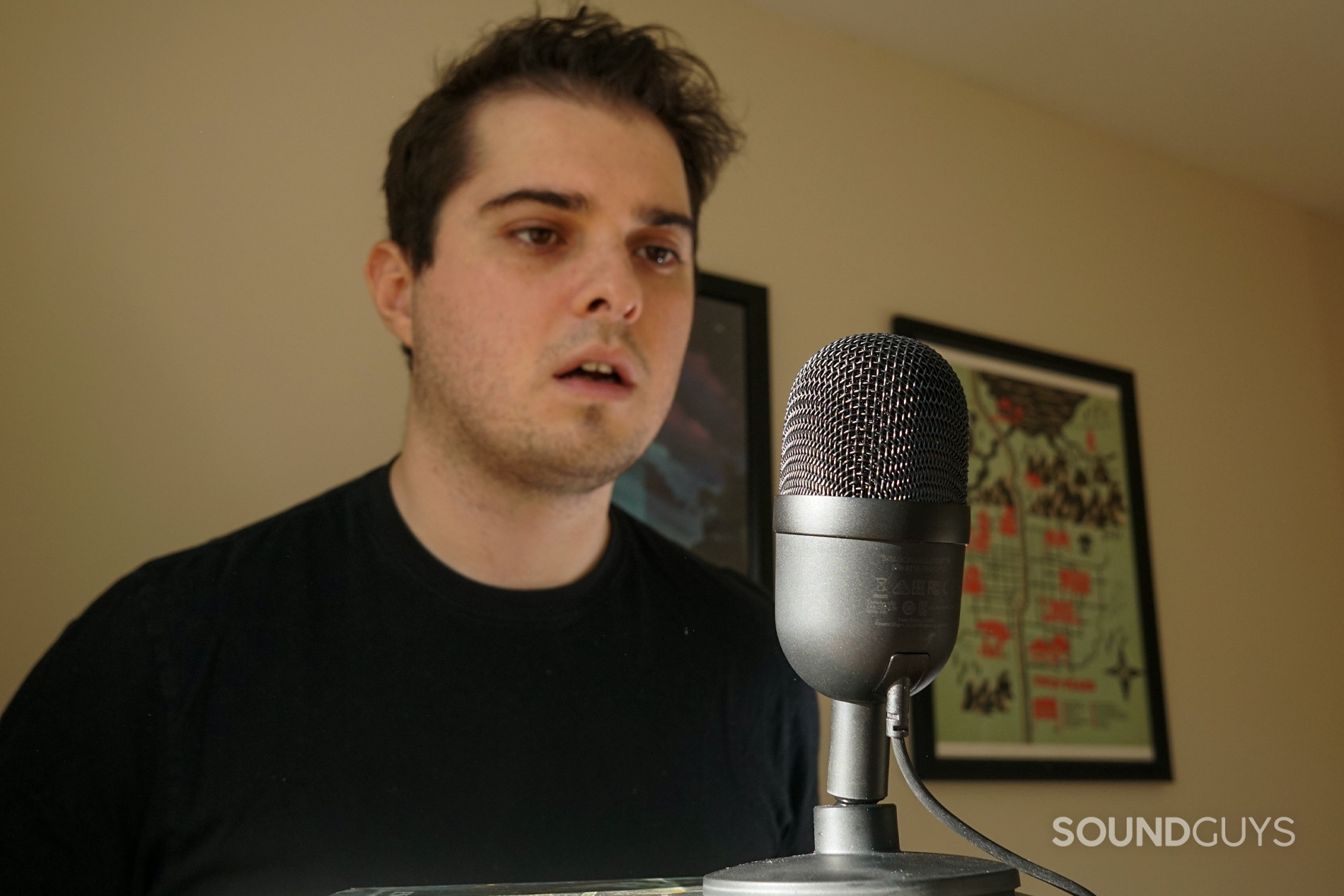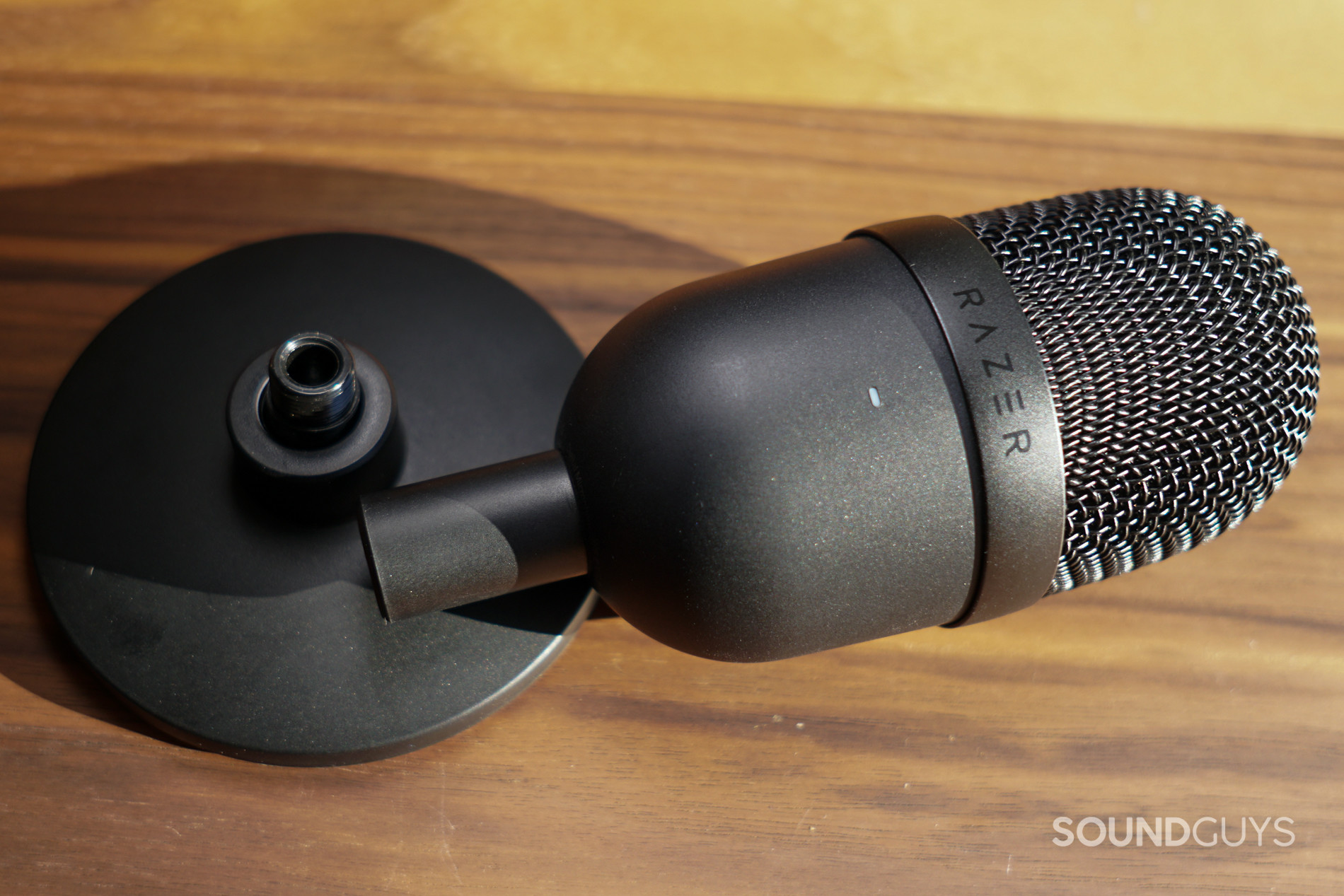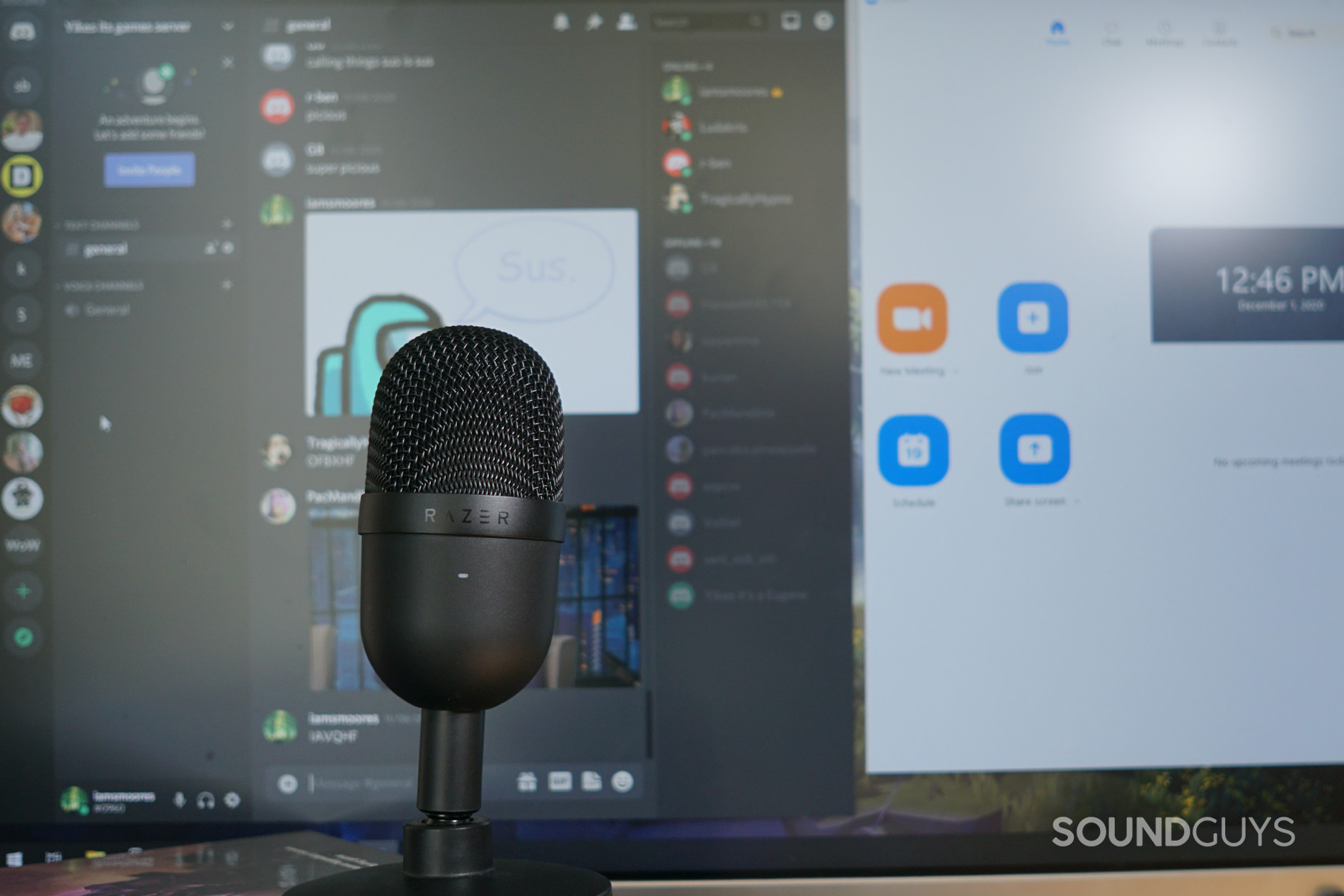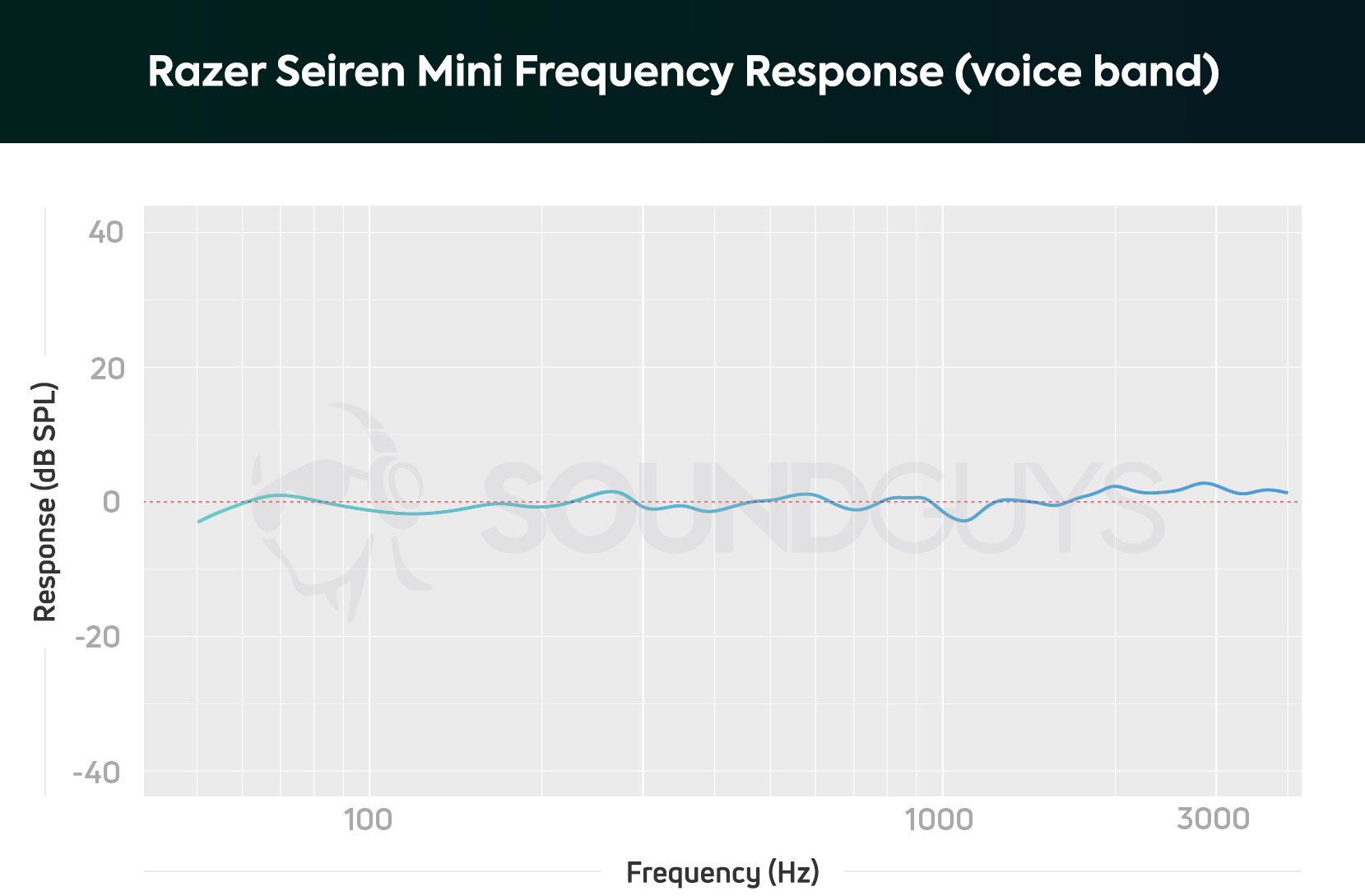All products featured are independently chosen by us. However, SoundGuys may receive a commission on orders placed through its retail links. See our ethics statement.
Best computer microphones
Published onJuly 25, 2022
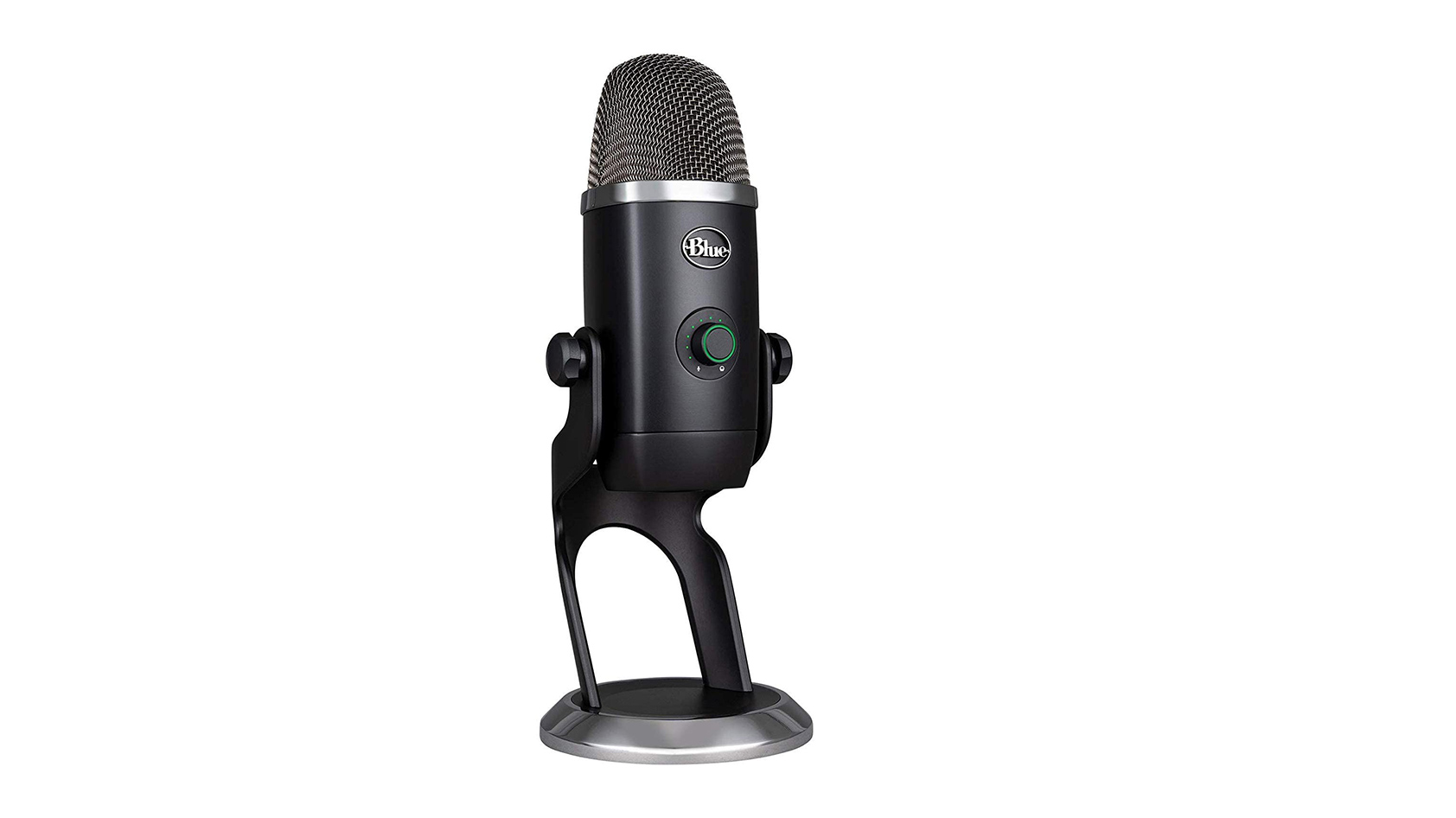
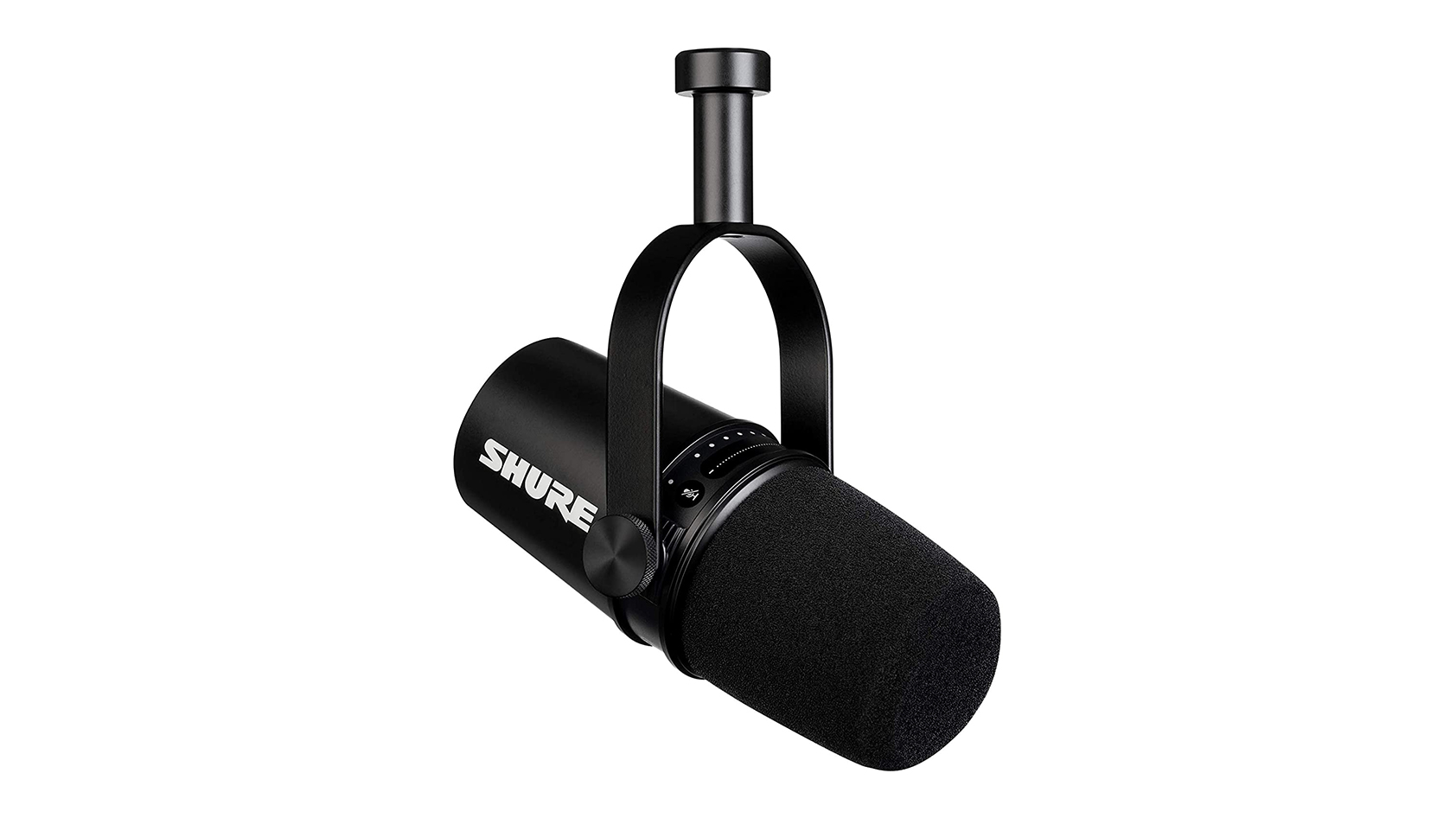
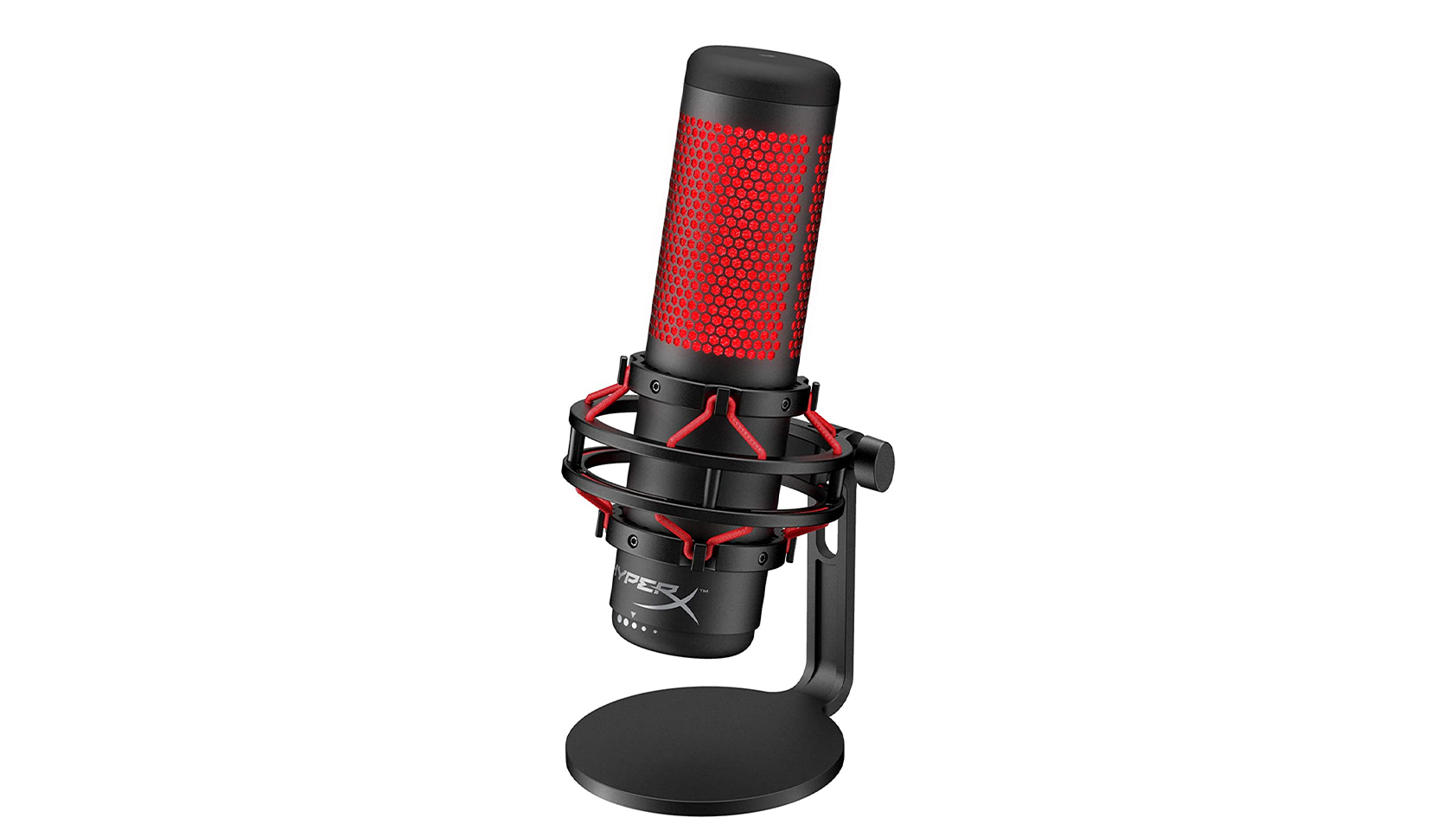
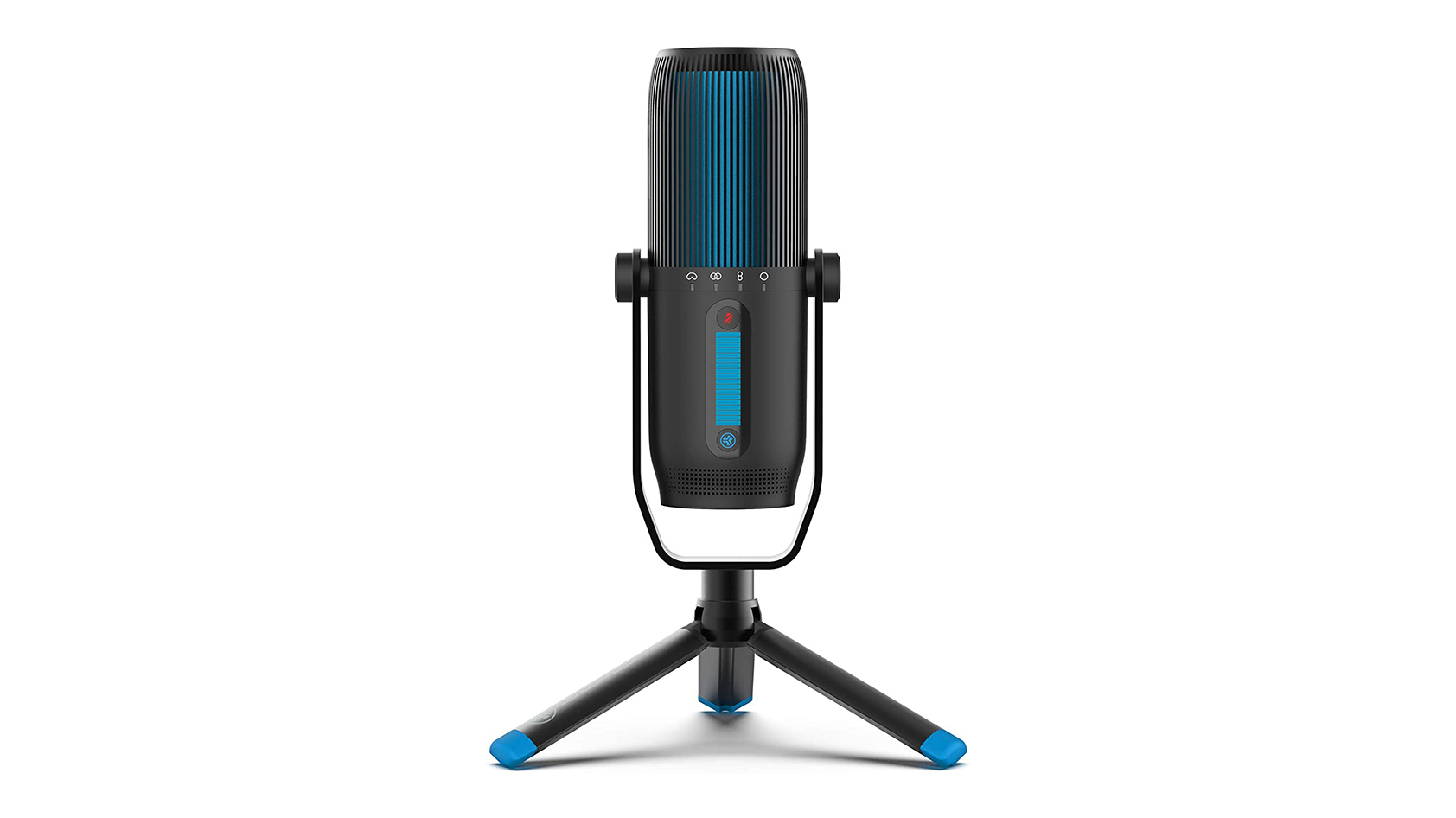
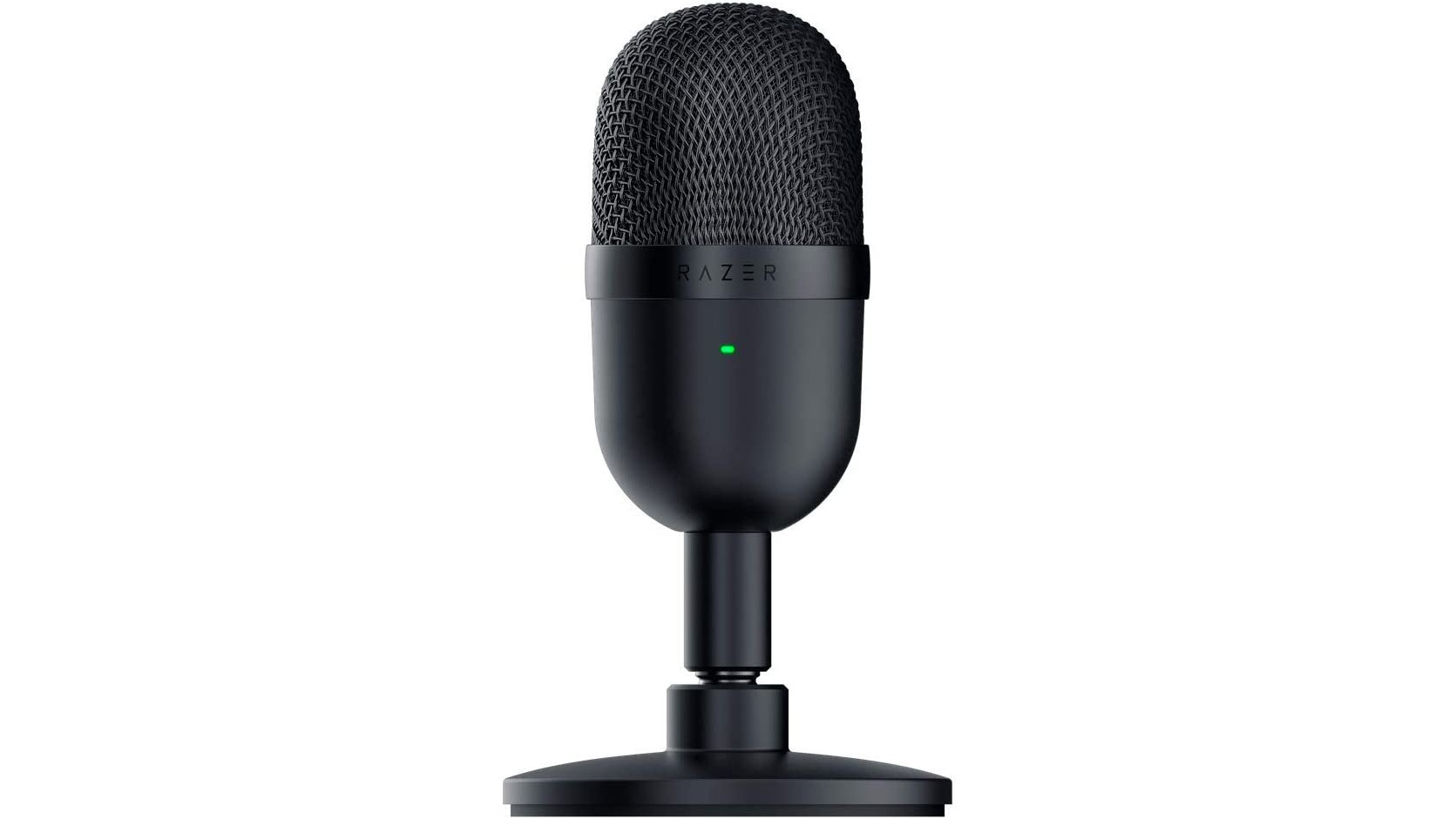
Whether you’re in the market for a new podcasting microphone or just want something to use when chatting with friends on Discord, choosing a computer microphone can sometimes be quite difficult. There’s a lot to consider, from cheaper options such as the Razer Seiren Mini to higher-end choices such as the Blue Yeti X. We’ve collected this list from the microphones we’ve reviewed to offer solid options, depending on what sort of microphone you’re in the market for.
Why is the Blue Yeti X the best computer microphone?
The Blue Yeti X reigns as our favorite USB microphone. You can choose from several different pickup patterns, making it exceptionally versatile. The all-metal construction makes for a solidly built mic that is easy to come to grips with. It’s particularly well suited to voice applications, and is an excellent choice for anything from conference calls to podcasting. Although the price is around the upper end of this list, the excellent quality makes the Blue Yeti X an easy recommendation.
The Blue Yeti X also features an adjustable knob to control gain and ensure optimal recording quality. This includes knob LEDs and integration with Logitech G Hub (Windows/macOS). From the G Hub app, you can fully adjust the way the Blue Yeti X behaves. All these features combine to make this the best computer microphone for most people.
Overall, the Yeti X sounds great even though it has some issues with plosives and fricatives (p, ph, f, s, sh, z sounds). In the podcast episode below, Chris speaks from his empty kitchen full of hard, flat surfaces and it still comes through pretty clear.
The Shure MV7 has the best sound quality
Although it’s expensive, the Shure MV7 hits it out of the park regarding sound quality. This microphone resembles another Shure mic that is arguably the queen of the podcasting space right now, the Shure SM7B. That pedigree alone is enough to make the MV7 notable. With the Shure MV7, you get nice features like LEDs to indicate level, and a touch strip on the top side for adjusting volume on the fly.
The Shure MV7 features a fairly standard cardioid pickup pattern. It also features an analog XLR output that can operate at the same time as the digital USB output, making it a solid option for anyone that might be looking to switch to a more professional audio interface at a later date. Another neat thing about the Shure MV7: you can use the XLR and USB ports simultaneously to record a high-res file and low-res backup.
It also has some integration with software, expanding the number of things you can do with it. The Shure MV7X also exists for users that don’t need a USB output.
The Shure MV7 sounds very good, but you may want to play around with all of the sound options in the app.
Shure MV7 (flat) microphone demo:
Shure MV7 (high pass) microphone demo:
Shure MV7 (presence boost) microphone demo:
Shure MV7 (high pass and presence boost) microphone demo:
HyperX QuadCast is great for RGB fans
The HyperX QuadCast is a solid option for anyone wanting a particularly flashy microphone. Streamers and podcasters will no doubt appreciate the adjustable lighting that fills the outside grill and looks quite excellent on camera, while also doubling as an easy indicator of when the microphone is muted. The HyperX QuadCast features several different polar pickup patterns that the user can switch between on the fly, and the microphone generally delivers on sound quality.
The HyperX QuadCast features a built-in pop filter, which makes it easy to set up and use without having to find extra equipment. It connects via USB, like most of the other microphones on this list. The only issue we noticed with the sound of the HyperX QuadCast is an abundance of sibilant sounds during recording, but you can remedy that by adjusting the microphone’s position and applying some post-processing.
In our podcast sample below, you can hear the proximity effect coming into play but the quality is quite good for a basic setup.
The JLab Talk PRO has an extensive set of features
The JLab Talk PRO microphone is another USB microphone sitting around $150 USD. It comes with a small stand that lets you angle it for the best sound quality. You can toggle between multiple recording patterns to best suit the microphone to the recording environment. On the front of the microphone is a meter that displays the levels for the volume and gain knobs. The microphone also features an LED circle on the bottom of the microphone.
The JLab Talk PRO connects via USB-C and you can plug headphones in for live monitoring. This microphone also records at 192kHz/24-bit, ensuring plenty of detail is captured with a low noise floor, should you need it.
The Talk PRO sounds especially good with the cardioid polar pattern, which is what most people will choose.
JLab Talk PRO cardioid speaking sample:
JLab Talk PRO cardioid singing sample:
JLab Talk PRO cardioid electric guitar sample:
The Razer Seiren Mini is the best computer microphone for anyone on a budget
If you’re buying an external computer microphone on a budget, the Razer Seiren Mini is a good pick. This microphone is only $49 USD, and while that limits its sound quality and features somewhat, it still delivers on being a solid product on the cheap. The Razer Seiren Mini features a supercardioid polar pickup pattern, though some keyboard noises are still audible if you’re typing while using it. For the most part it’s pretty good at picking up what’s in front of it.
Unfortunately, the Razer Seiren Mini doesn’t support Razer Synapse, meaning you’ll have to find your own software if you wish to EQ it or do any other post-processing. The microphone is also a bit lacking in terms of your ability to position it due to its short stand. Despite all this, however, it still gets the job done, and is a solid choice if you’re looking for something on a budget.
The 14mm condenser capsule’s output is digitized to 16-bit audio at 44.1-48kHz sampling rates. The audio is good, but not as clear as with other more premium options, likely a consequence of the cheaper internals and high noise floor.
Razer Seiren Mini sample (10-inch distance):
Razer Seiren Mini sample (6-inch distance):
Razer Seiren Mini polar pattern sample:
Razer Seiren Mini with typing noises:
The best computer microphones: Notable mentions
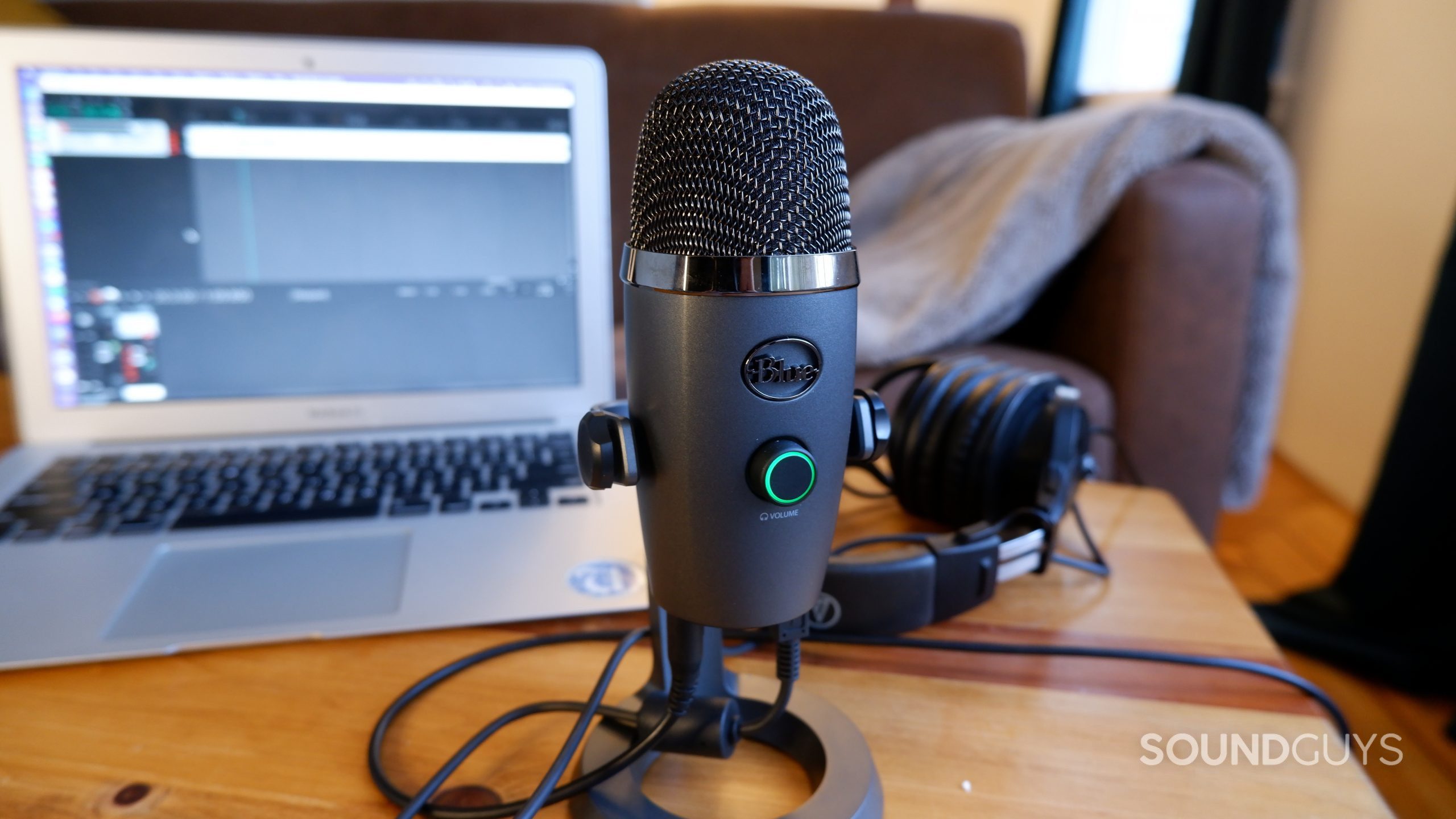
- Audio-Technica AT2020: A very common suggestion for an entry-level podcast microphone, the AT2020 is well known and comes in both USB and XLR variants. It features a cardioid pickup pattern and is best when paired with a pop filter. It’s a good choice for picking up the subtleties of the voice.
- Blue Yeti Nano: The younger sibling to the Blue Yeti X, this microphone features two pickup patterns and a sensible selection of features. It’s fairly portable and well built, while being notably cheaper.
- Elgato Wave:3: Although it’s around the middle of the budget range for this list, the Elgato Wave:3 is a great choice for anyone looking for a nice streaming microphone. It’s versatile and compact, and features a cardioid pickup pattern.
- Movo UM700: A nice option on the cheaper side of things. Features four different polar patterns and a removable windscreen. It’s fairly portable and easy to use, and only lacking when it comes to software.
- Shure MV5C: Although we did find it to be slightly overpriced, the Shure MV5C is still a decent choice when it comes to computer microphones. Thanks to some software features and a solid design, this microphone is a solid choice for focusing on recording the voice in particular.
XLR microphones
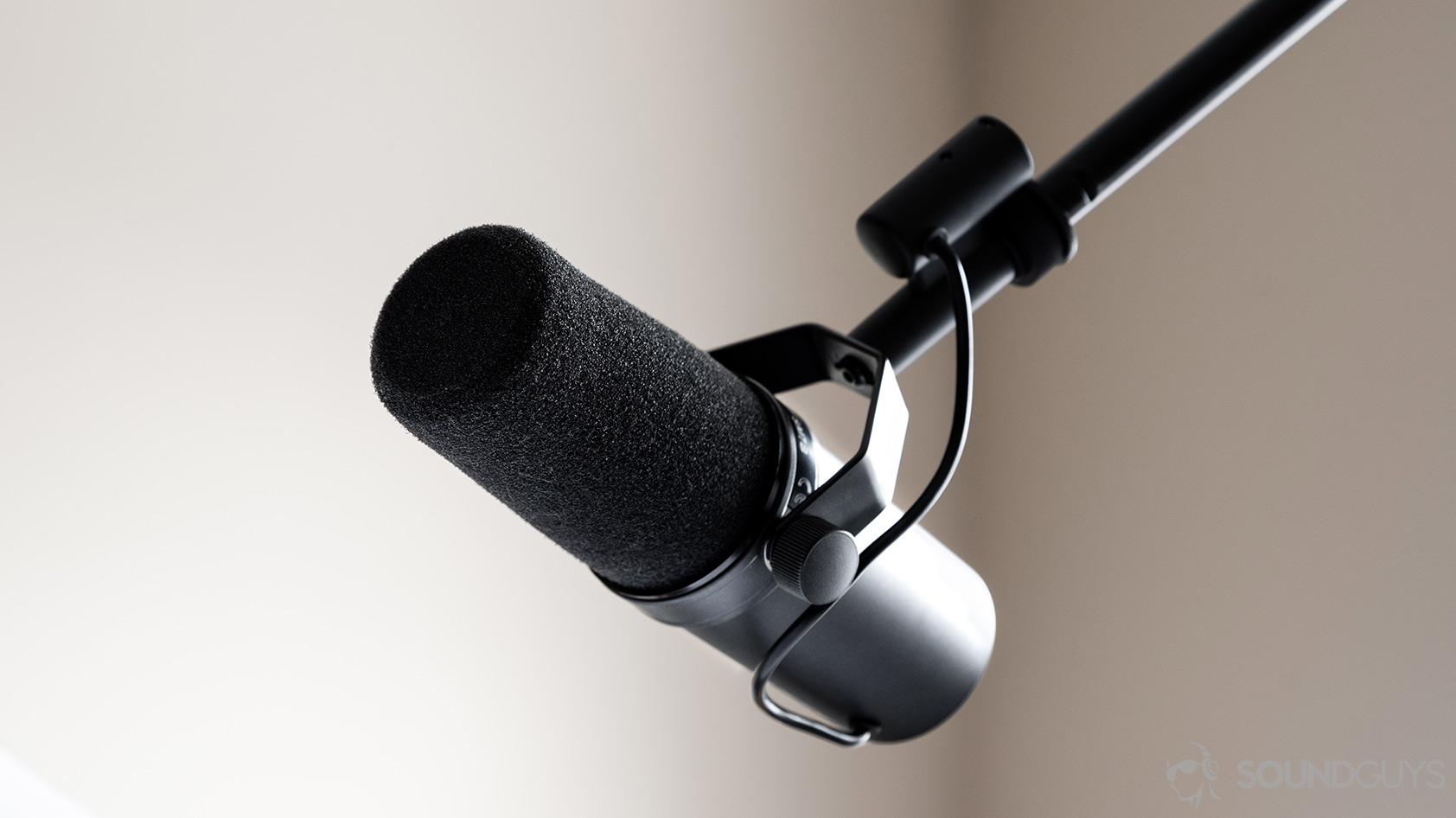
- Shure SM7B: The Shure SM7B is basically the industry standard for professional podcasting, and with good reason. Its tailored frequency response and included pop filter make it an excellent choice to suit almost anyone’s voice. Since its output is over XLR, you’ll have to pair it with an audio interface. The high price tag of this product is absolutely worth it if you’re looking to capture the highest quality voice recordings.
- Shure SM58: The indestructible standard-bearer of live audio. The SM58 has been the main choice for capturing vocals, particularly in live settings, for the past few decades. If you choose to go with this microphone for your computer you’ll need an audio interface and a mount for it, but you won’t be let down by its frequency response and high quality build.
Hold up! Something’s missing:
We’ve made a big improvement to how we demonstrate the microphone performance of products we review. We now use a standardized test setup that plays back pre-recorded phrases from a calibrated artificial mouth in our test chamber, either with or without simulated background noises, simulated reverberant spaces, or artificial wind. This means that samples from every product can be directly compared, which makes it far easier to make meaningful comparisons between products in terms of the raw speech quality or the product’s ability to reject noise.
It will take a while to update our backlog of old test results, but we will update this review (and many others!) once we’ve improved microphone demos. These will be made obvious in each new sample which begins with the phrase, “This is a SoundGuys standardized microphone demonstration …”
Once we make this change, you’ll notice new and improved sound quality measurements and performance plots (black background instead of white), rather than our older test charts with a white background.
Thank you for bearing with us, and we hope to see you again once we’ve sorted everything out.
What you need to know about computer microphones
When selecting a microphone for use with your computer there are a few factors that you should keep in mind no matter which option you’re considering.
You don’t need an audio interface if you choose to buy a USB microphone, rather than the XLR ones featured in our Notable mentions section. You will need to purchase an audio interface if you buy an XLR microphone, since you can’t just plug an XLR mic directly into a PC.
What is a microphone pickup (polar) pattern?
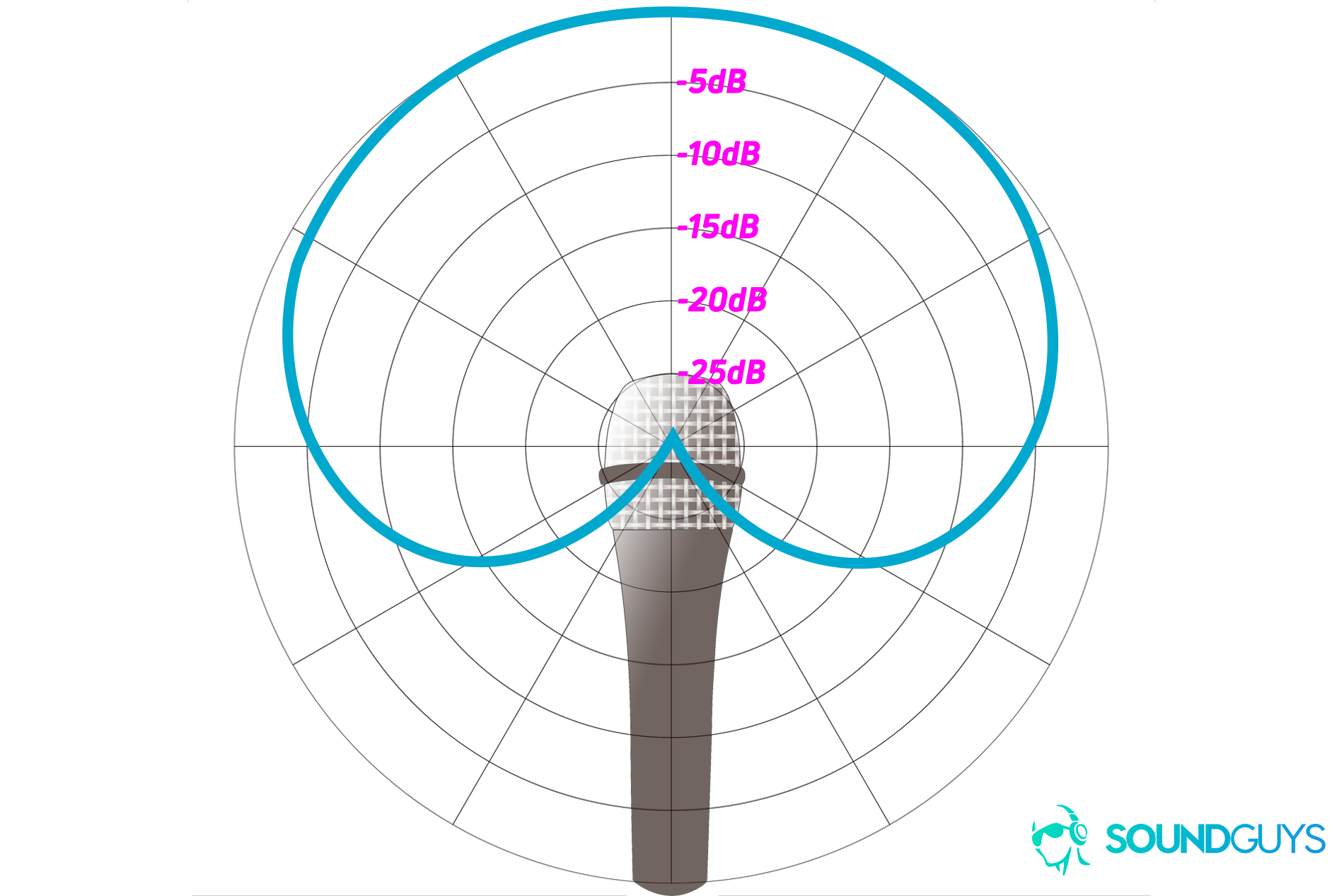
Consider the recording (polar) pattern of each microphone. Most microphones feature a cardioid pickup pattern, which focuses on sounds directly in front of it with a gradual rejection of sounds to the sides and rear. Other pickup patterns such as hypercardioid, omnidirectional, and bidirectional (also called figure-8) also exist. Some of the microphones on this list, such as the Blue Yeti X, allow you to switch between several different polar patterns on the fly, allowing you to improve your microphone’s sound quality depending on your room and other variables.
USB vs XLR microphone connections
Another factor to consider is how the microphone outputs audio. Most of the microphones on this list are designed to output audio digitally over USB, but some have support for analog XLR connections as well. XLR is a standard for microphones dating back to the 1950s and is still the standard for live sound and recording studios today. To use a microphone that only has an XLR output, you need an external audio interface with a preamp that accepts an XLR input (some microphones also require something called phantom power, consult your product’s manuals for more details on this).
Does your computer support the microphone’s software?
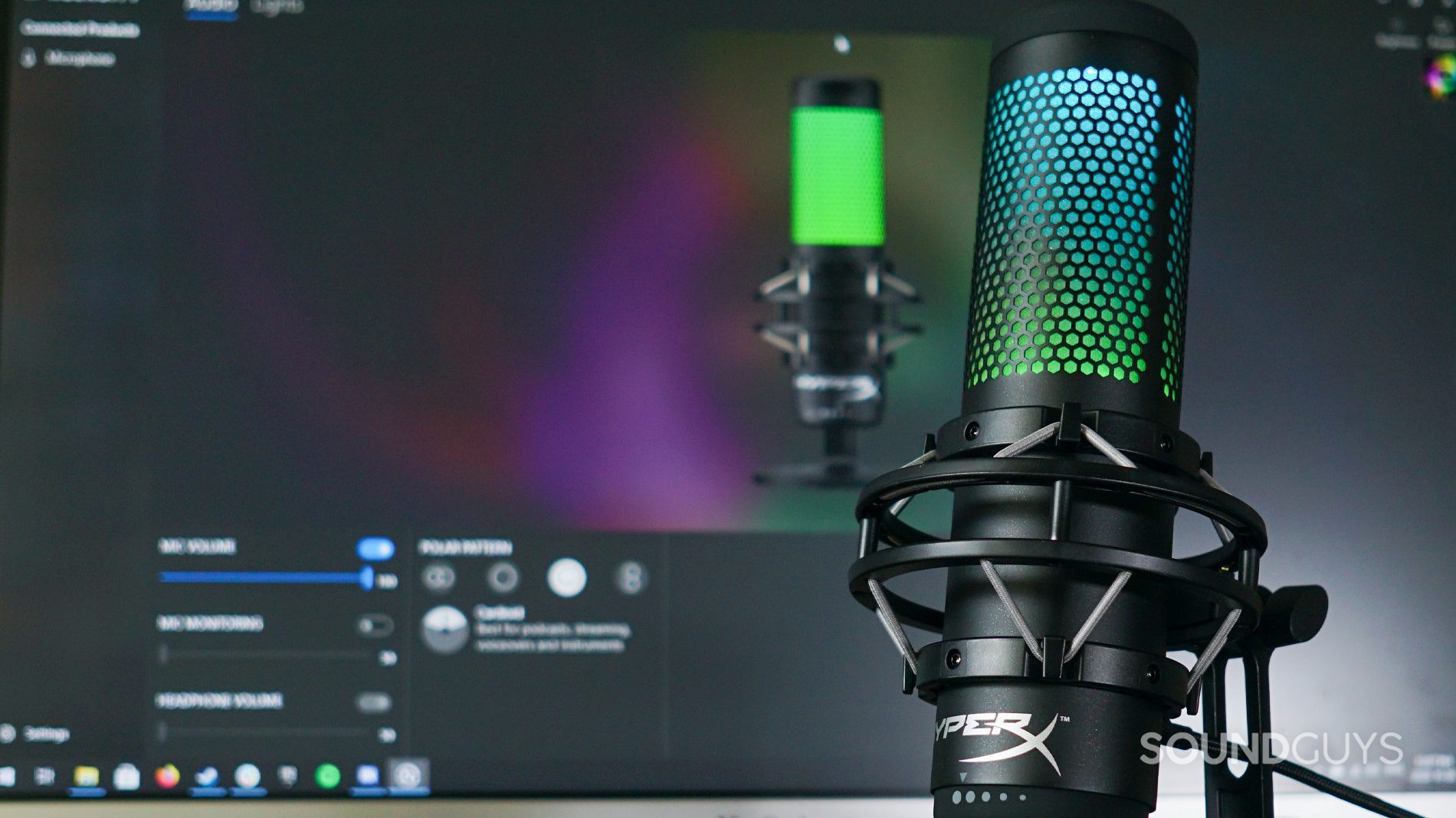
Finally, you may also wish to consider if your computer has support for any additional software used by these microphones. USB audio has wide support across devices and operating systems, but you may run into issues if you need to use specialized software with these microphones. Additionally, if you plan to use MacOS, Linux, or some games consoles, you may want to double-check that they support those platforms.
How we choose the best computer microphones
SoundGuys pulls a selection from our reviewed products that we consider both high quality, and easy to use, for a variety of purposes. While this list isn’t comprehensive, it represents a selection of products that fill the needs of someone looking for a high-quality microphone that will easily plug and play on typical computers.
Our best lists are continually evolving as new products come out. When that happens, our team confers and we update the list as we see fit.
Why you should trust SoundGuys on the best computer microphones
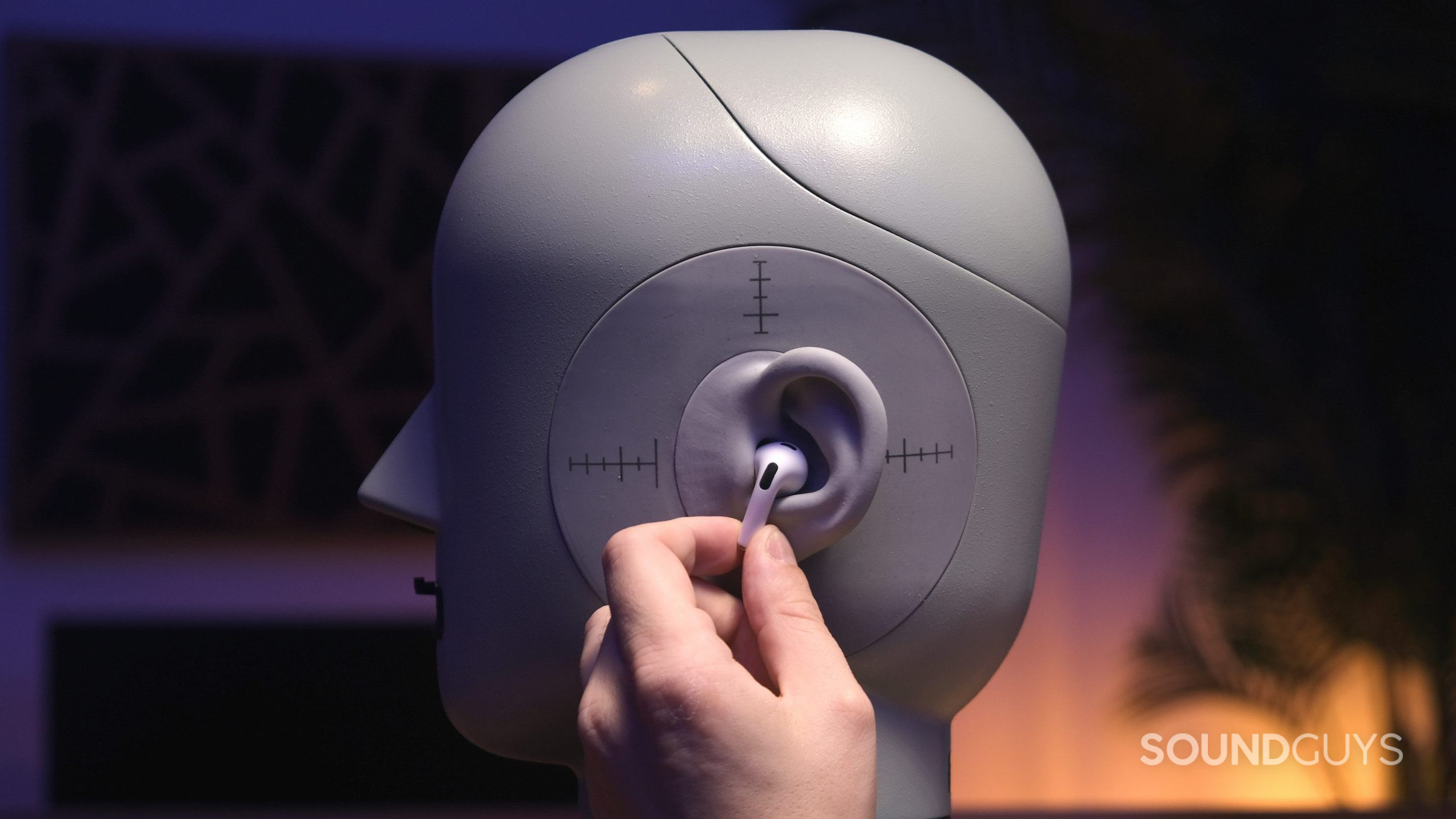
The team at SoundGuys is deeply invested in helping you find the best audio products for your needs and budget. We want to share our passion with our readers and minimize the legwork you need to put in. Whether we’re interviewing experts on hearing loss or submerging waterproof speakers, we do what it takes to get to the truth of the matter.
Our team has years of experience reviewing products, conducting lab tests, working in studios, and in the field of journalism. If you’ve wondered if we get paid to favorably review certain products: we don’t. In fact, it’s against the SoundGuys ethics policy to receive any compensation or gift for reviews or spots on our lists.
Frequently asked questions about computer microphones
Unfortunately, the Xbox Series S/X consoles use a different audio standard than the PlayStation 5 and Nintendo Switch. When buying a microphone for an Xbox console you should be on the lookout for a microphone that specifically says it supports it (likely at the expense of support for the PS5). All of these microphones should be compatible with PCs regardless.
